SPECIAL AND NATURE-FRIENDLY PACKAGING
Innovation, technology, quality, sustainability, and safety are the stars of its developments, where its main activity occurs in the Latin Ameri can and Brazilian pet food segments.
NEW BY-PRODUCTS FOR THE PET FOOD INDUSTRY HUMANIZATION AND PREMIUMIZATION OF PETS ON AN INDUSTRIAL SCALE

Issue N° 13 INTERNATIONAL MAGAZINE ABOUT PET FOOD INDUSTRY Volume IV - October 2022
brands supporting pet food manufacturers on three essential aspects of their
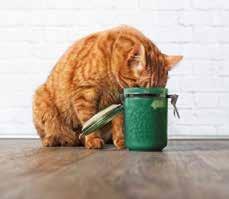
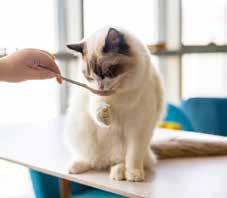
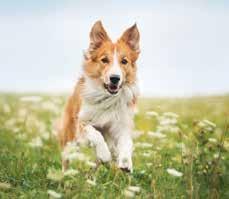
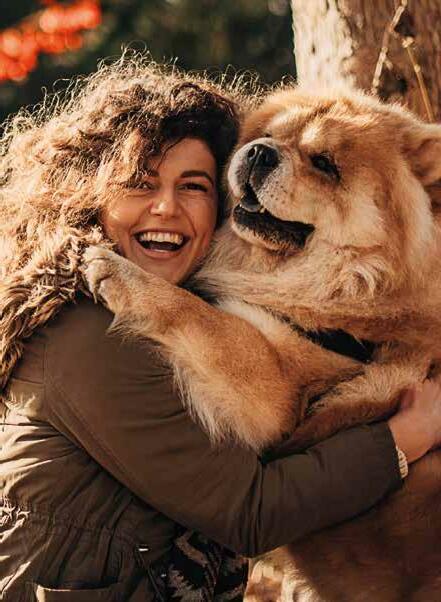
2 —
Symrise Pet Food is the global leader of high value solutions improving pets’ well-being and owners’ satisfaction.
— Discover our
products: Pet NutritionPet Food Palatability Pet Food Protection or visit our website https://petfood.symrise.com *Videka is a joint venture between Symrise & Kalsec.
MAGAZINE
THIS
All Pet Food
Alvear 44, Chacabuco Provincia Buenos Aires–Argentina Info@allpetfood.net
Managing Director
Pablo Porcel de Peralta pablo.porcel@allpetfood.net M. +54 9 2364-537698
Sales manager
Iván Marquetti
ivan.marquetti@allpetfood.net M. +54 9 2352 501730
Director’s assistant
Victorina Manes
victorina.manes@allpetfood.net
Editorial Team
Maria Candelaria Carbajo
Victorina Manes
Ludmila Barbi Trindade
Erika Stasieniuk
Armando Enriquez de la Fuente Blanquet
Fernando Raizer
Juan Manuel Peralta
Design & Layout Manager
Laureano Cane Juliana Di Palma
Software development
Matías Basile Matías Schettino
Our Community Web: www.allextruded.com Linkedin. https://bit.ly/36SK5MT Facebook https://bit.ly/3kGFJk5
Twitter: https://bit.ly/3ByDbdY Youtube: https://bit.ly/3izL0Hn
Social changes that affect the pet food industry and demand innovation
Ways to drive innovation in the pet food industry
New demands for the pet food market: what alternatives do we have?
gaps, and demands in the pet food industry
Cipal 2022 in pictures
New by-products for the pet food industry
improving health inside out
Continuous coating: High retention time
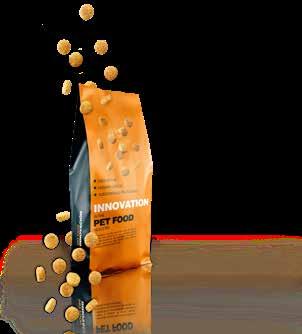
Showcase
Special and nature-friendly packaging
How can we innovate in the pet food industry?
The application of Spirulina as an ingredient in food for dogs and cats
The interview: Dana Brooks CEO de Pet food Institute
variety is not an issue… if you have the right
Brazil
A model facility in Latin
at www.pcm-group.net ISSN 1464-0058
INTERNATIONAL MAGAZINE ABOUT PET FOOD INDUSTRY
© Copyright 2020 ALL PET FOOD All rights reserved. No part of this publication may be reproduced in any form or by any means without the prior permission of the copyright owner. More information can be found
Issue N° 13| Volume IV| October 2022 IN
ISSUE 4 Editorial 8 3
10
12
14 Research,
18
20
24
26
30 Technology
32
34
36
38
40 Packaging
solution 42 Wenger Manufacturing
–
America 48 Humanization and premiumization of pets on an industrial scale 52 Marketplace
EDITORIAL
Greetings to all readers of All Pet Food Magazine. It´s a pleasure to meet again and realise we´ve almost reached the end of the year 2022, and therefore the last issue of the magazine.
We´ve got to this point exhausted but with the pride of having done the job of being the link be tween many of the different sectors of the Industry. Doubtless to say we arrived with an enlarged heart after having hosted our Latin America Pet Food Industry Congress, CIPAL 2022 just a few days ago, which according to our visitors, exhibitors and industry professionals, it counted a high trust level, in accordance with the times that run in the pet food industry nowadays.
Feed producers companies, industry suppliers and professionals from more than 7 countries met in the wonderful Buenos Aires with the sole goal of keeping up with the new trends in the industry and providing new knowledge and solutions to an industry that grows and innovate almost everyday.
For those readers who couldn´t attend our Congress, in this issue you will be able to see a collage of pics and snapshots about CIPAL 2022, so we hope you can enjoy it. We also take the opportunity to make an invitation to our readers from the United States, Europe and, of course, LATAM, to attend in our next Congress CIPEU 2023 (European Pet Food Industry Congress ) to be held on September 27 and 28 in Zaragoza, Spain.
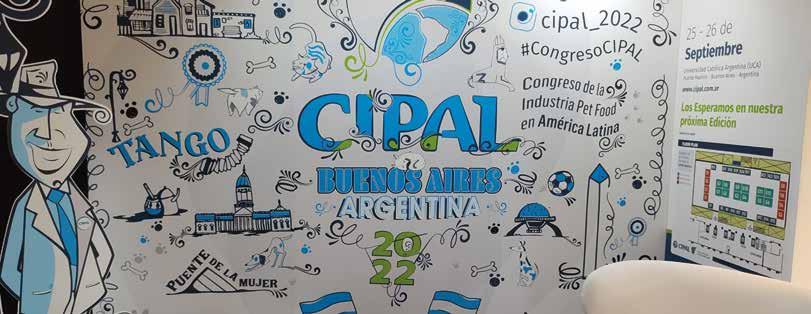
Although this October issue is our last of the year, it counts with excellent articles on ingredient alternatives, research, gaps, industry needs, new products, as well as an important packaging solu tions for the pet food industry.
The application of Spirulina as an ingredient in cat food will give you a better idea of its inclusion and at what scale, despite of the fact there isn´t enough information about this ingredient in the exrusion process or in those diets cooked at high temperatures.
Finally, you´ll enjoy an oustanding interview with Dana Brooks, CEO of the Pet Food Institute and a tour through the Wenger facilities in Brazil, conducted by a team from All Pet Food.
Enjoy the reading, get trained and feel free to contact us if you want to publish any research or new solutions related to the pet food industry. We wish you a very happy end of the year and since it is not over yet, we are seeing each other at FIGAP 2022.
Greetings
All Pet Food editorial team
4 MAGAZINE
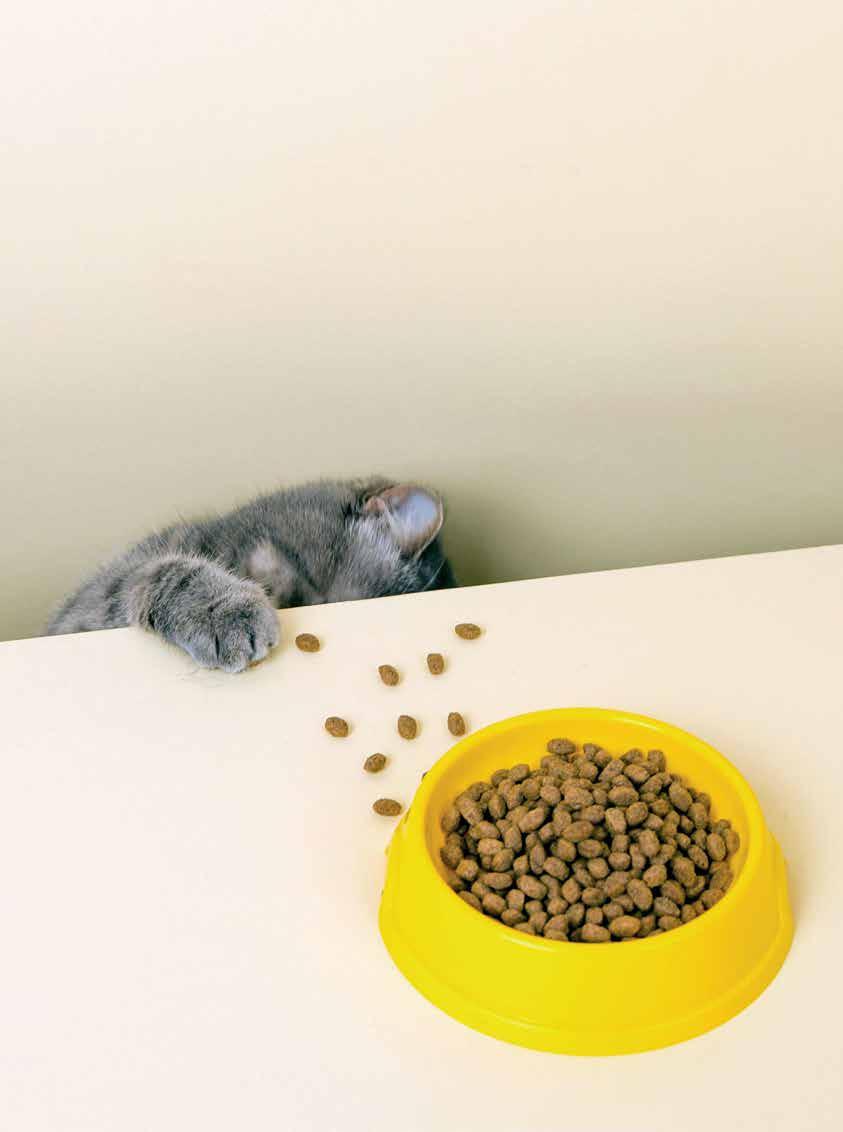




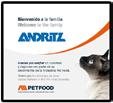
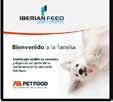
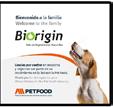



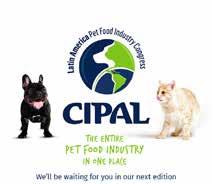

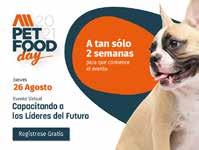
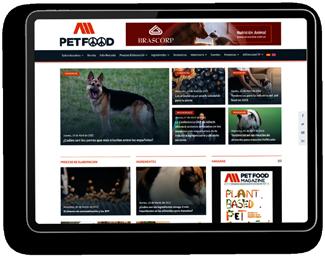
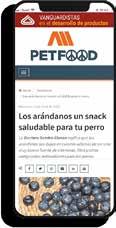

6 Online content platform in spanish and english Printed and digital magazine with exclusive content Congress CIPAL, CIPEU y AllPetFoodDay. Webinars and trainings for the entire industry Analysis, information and market trends your marketing strategy with di erent options We promote info@allpetfood.net company/all-petfood MAGAZINE ONLINE CONGRESS TRAINING ANALYTICS https://allpetfood.net !
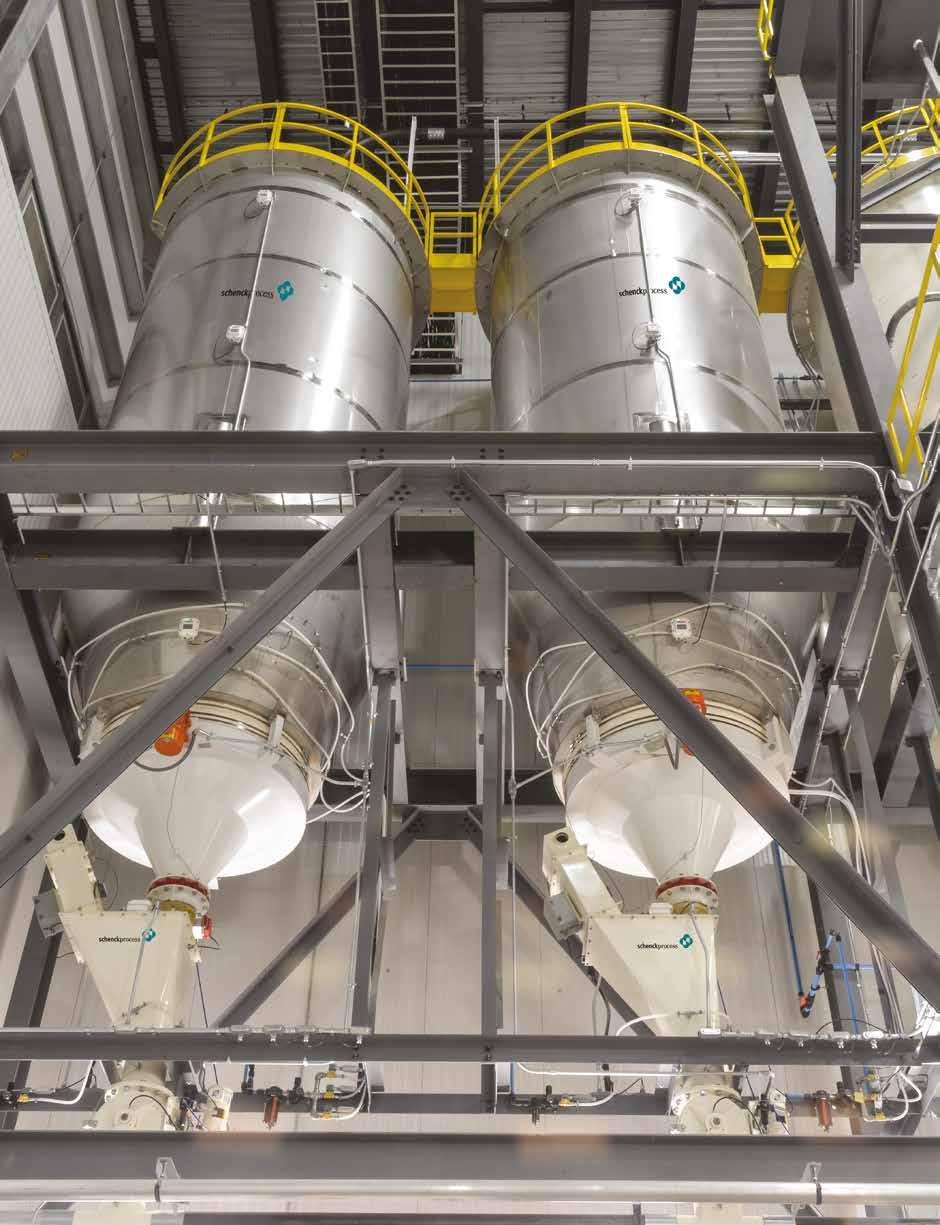


www.schenckprocess.com americas@schenckprocess.com 816-891-9300 » Pneumatic Conveying – Extruder to dryer – Dryer to coating – Coating to storage/mixing silos – Silos to packaging » Feeding – Gravimetric feeding of palatants » Sifting – Pre-extrusion – particle classification System Solutions in Bulk Material Handling More Information
3 SOCIAL CHANGES THAT AFFECT THE PET FOOD INDUSTRY AND DEMAND INNOVATION
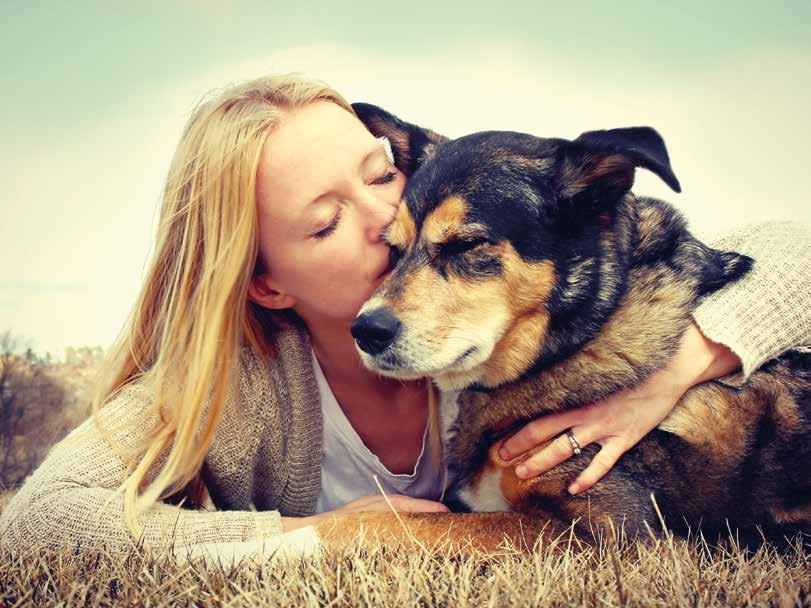 By All Pet Food
By All Pet Food
With its ups and downs, the overall growth of the pet food industry is stronger than ever. But if there is something that we must highlight in recent times, that is the number of challenges that arose. To meet the innovation needs, we should sum up processes and product conflicts such as worldwide inflation, increased production costs, raw materials scarcity, and new demands from consumers. As a result of this combination, we have an industry that does nothing but adapts to new and changing contexts.
Throughout 2020 and 2021, there was much talking about the “new normal,” and it seems that it has finally arrived. In addition to the coronavirus pandemic, various factors have fostered the creation of this new present.
Let’s talk, then, about the main factors that demand in novation and adaptability to the pet food industry.
Pandemic and health
A pesar de los desafíos que surgieron durante el periodo de c
Despite the challenges that arose during the lockdown period in 2020, the pet food industry has managed to keep growing,
mainly resulting from the increase in pet ownership and the pre miumization driven by the pandemic and health care.
In correlation with the trend that came a few years ago on pet humanization, during the confinement period, it was possible to see how pet owners began to acquire more awareness and, therefore, made more investments in pet maintenance and care. Thus, millions of people worldwide started to allocate a higher percentage of their income to pet care products: premium quality food, comfort, rest accessories, cleaning and hygiene products, and healthy snacks, among others. This decision is completely consistent with what they did with themselves: not being able to leave home, they began to take care of themselves in a more
8
...during the confi nement period, it was possible to see how pet owners began to acqui re more awareness and, therefore, made more in vestments in pet mainte nance and care.
conscious, responsible, and frequent way, because little more could be done to spend their money on other activities or tasks.
However, these results are not a parameter of behavior sustained over time, given that the pandemic precisely is a particular period of our lives. As the pandemic becomes en demic, pet owners are also transitioning into this new reality, where they not only find themselves with many expenses that they had neglected but also with a context of inflation and crisis. Considering this, while we can say that there was a growth in the industry (because of all the families that included a new pet in their homes, for example), it is difficult to predict the future with certainty.
Sure, some can and choose to continue buying high-quality food for their pets. But there is also a percentage of owners, es pecially millennials, who can look for cheaper alternatives to face all the expenses they want to lead a life as socially active as they used to be.
Inflation
While pet food inflation seems reasonable compared to pro ducts in other industries, the cumulative effect of inflation during the pandemic may be a concern. Price increases for various raw materials inevitably result in higher pet food price inflation.
There are many countries where inflation has impacted our in dustry. To name a few, we can talk about the US, where pet food inflation in April 2022 was 1.2% higher than in March this year and 7% higher than the same period last year (2021). In Mexi co, pet food brands have seen up to 40% inflation during the past two years. In Peru, pet food products increased prices by as much as 7.7%.
If we look at Europe, we can talk about Spain, for instance, a country where inflation scaled by rising energy prices, and the war in Ukraine, where Russia blocked the export market for raw materials. Until mid-2022, the annual rise in the sector was 6.9%.
There is no doubt that inflation is a problem that affects seve ral interrelated industries and that, therefore, they impact each other. However, everyone seeks the most positive result for all industries.
Sustainability as a driving force
If there is one undeniable positive consequence of the pande mic, that is the increase in pet adoptions that occurred in 2020. Logically, this impacts the food market, which, according to Bu siness Wire, will achieve an estimated compound annual growth of 4.3% between 2021 and 2026, reaching a value of 108 billion dollars in 2020.

The market’s exponential growth does not only increase de mand but also more needs begin to emerge. And before them, new answers are needed. Thanks to innovation, the industry is constantly searching for improvements or new solutions to meet the demand of each one of the market members. And if there is one standing out and remaining present in all the others, it is that of a more sustainable production chain from beginning to end.
Undeniably, the increased awareness of human and pet health brought more environmental consciousness. In addition, events such as the animal appearance on land commonly occupied by humans or climatic phenomena that have occurred since the pandemic began, and the change in people’s behavior have made society increasingly aware of what it consumes and its environmental impact. And as with greater awareness of grea ter responsibility, today many consumers who can afford greater spending choose products that come from sustainable brands or are made with ecological or biodegradable materials to reduce the impact of their lives on the ecosystem.
In this sense, we must pay special attention to millennials given that, according to various studies, approximately 83% of the members of this group affirm that it is really important for them that companies seek to take care of their impact on the environment. In addition, 75% of them say they are very likely to change their purchasing or consumption habits to take care of the planet.
Conclusion?
When producing pet food, we must consider many factors that conform to an industry. If we want to keep growing and reach more and more people and pets, we must take into account that, nowadays, there are three fundamental elements on which we have to work: sustainability, innovation, and flexibility.
In such a demanding and at the same time changing context, we need resources that allow us to search for new and better so lutions without losing or reducing our ability to adapt to a world and consumers with ever more needs, demands, and consumer desires.
Sustainability is the only way to enter an industry with a pro mising and possible future. Innovation is the door to a bigger industry with more accurate solutions, and the ability to adapt ourselves is the piece that will accompany us to navigate the cu rrent times.
WAYS TO DRIVE INNOVATION IN THE PET FOOD INDUSTRY
By All Pet Food
Innovationinthepetfoodindustryisaspresentaspeople’sbehaviorchanges.Currently,thereisnoindustryconvention,conference, oreventwherethisconceptisnotsubjecttodebate,aswellaswhatwecandotobringmoreandmoreofitintotheindustrysolutions.
With premium-type food products playing a leading role in the industry due to the trend of transferring people’s consumption habits to pets, the only thing to do is to look for ways to improve the production chain. This way, we can reduce costs, be more efficient and offer better quality products. All this, hand in hand with innovation and technology.
We have selected 4 aspects in which to work to promote inno vation: 2 areas of the production process and 2 ways of working within companies.
2 areas to look for innovation in the pet food industry

Selective extrusion
We can work on specifically innovating the extrusion process using, of course, innovative technologies. How? Looking for se lective extrusion. That means looking for only food starches to
undergo the extrusion process. In this way, all the other ingre dients are added in later stages through cold processes. With this elaboration process, food quality can be guaranteed, as ingredient transformation is carried out without altering their nutritional characteristics, preserving all the organoleptic and nutritional properties.
Sustainability is the only way to create a future
Consumer demand, hand in hand with human trends, drives innovation towards the search for more comfortable but above all, sustainable packaging. When we talk about product packa ging of premium pet food, the one booming in the industry, we must say that its consumers are increasingly taking into account how environmentally responsible the packaging and information it provides is.
One of the essential areas of innovation in this direction is to seek improvements in printing, both in quality and in costs and production process (with a sustainable approach, of course).
10
One of the essential areas of innovation in this direction is to seek improvements in prin ting, both in quality and in costs and production process (with a sustaina ble approach, of course).

The truth is that packaging is the first impression when selling a product. Years ago, it was a 100% physical experien ce, but now the online world has also been added. And ei ther in one of the two formats, we must seek to offer what is expected of these products: convenient packaging with hi gh-definition printing, such as a resealable opening, or materials that prolong food conserva tion.
Today, sustainability innovation grows around packaging trends on recyclability and renewable resins. And as better te chnologies become available, we can improve recycling streams and costs.
Many companies are considering post-consumer resin to build new packaging types or launching proposals to encourage consumption with the least possible impact, such as, for exam ple, product pickup in stores
2 company approaches to foster innovation
Innovation can come from anyone, anywhere
When we talk about promoting innovation in a company, we are not only talking about leaders looking for great ideas but about implementing an innovation culture that penetrates all areas and hierarchies. Innovation can happen and come from any level. We will never know how talented our employees are if we don’t give them a chance to prove it!
Innovation can come from anywhere if, as company owners or leaders, we are willing to consider someone else’s ideas and learn from what they tell us and then... get ready to take action!
Launch, learn, and improve
This is how start-ups work: launching fast and then seeking constant improvement is their philosophy. But we do not need to be a technology start-up to implement this methodology. If we see the first result of an innovative idea as a sample from which to collect market information and improve it later, we are already doing it. It is there, in the feedback, where you get pro ducts that stand out in a market!
It doesn’t matter what we’re working on. If we assume that the first version will never be good enough, we open the door to keep on working on new versions: more efficient, more precise, and more suitable for its possible consumers.
Conclusion
If there is something we must be clear about, it is that, in order to grow with innovation, all company areas must participate to achieve success.
Working with a focus on putting innovation at the service of the industry, we will obtain truly healthy food, tailored to the di fferent pet needs without putting the planet we live on at risk.
We remember, finally, that innovation does not have to be mo numental; even the smallest things you seek to innovate on can have an incredibly significant impact down the road!
NEW DEMANDS FOR THE PET FOOD MARKET: WHAT ALTERNATIVES DO WE HAVE?
By All Pet Food
With sustainability and continuous changes in the market, ingredients and raw materials are being tes ted in different functions and roles in formulations to find the best balance between quality, nutrition, and sustainability.
The industry is analyzing alternatives, which include that some existing ingredients, which have been used in a particular way until now, can play new roles in pet food recipes.
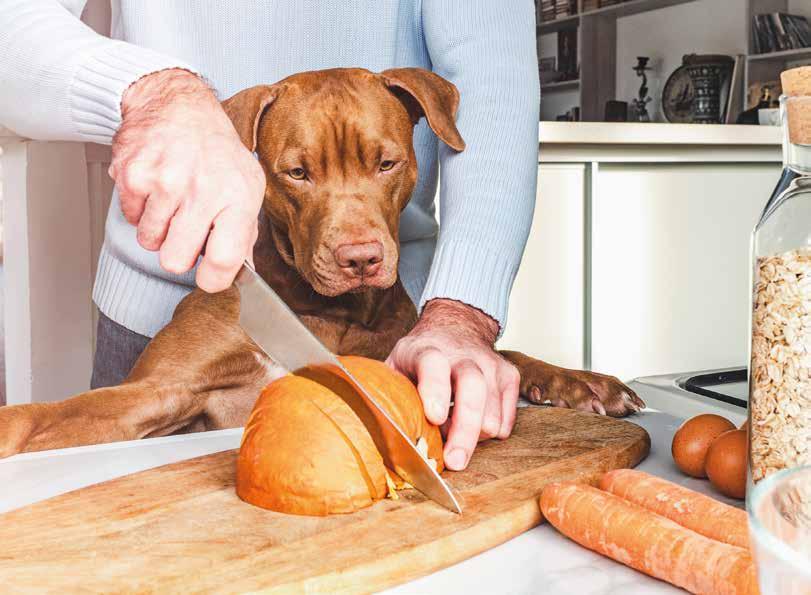
Let’s understand the context
Supported by the human trends of consuming organic food, reducing meat consumption, and reviewing the production chain and the environmental impact of each food people consume, the pet food industry is suffering changes. Driven by those consu mers increasingly aware of health and its impact on the ecosys
tem, the industry is motivated to seek new alternatives to meet the changing demands.
Regarding sustainability, a survey carried out by Euromonitor International Global Lifestyle shows that the importance and concern about the environmental impact and the climate crisis are significantly greater among people who have pets than tho
12
se who do not. In fact, almost 70% of pet owners are concer ned about climate change and seeking to reduce their negative impact on the environment. These numbers do not drive but compel our industry to take action and listen to what pet owners are looking for when it comes to buying food, snacks, and acces sories for their four-leg loved ones.
Small change, great results
The challenge is also indoors
Similarly, applying changes to the functionalities or roles of ingredients not only has external challenges but also, and to which we must give the most importance, internal ones, which arise from food production and the complexity it entails.
To change ingredient role, the most important details to keep in mind and review the cascade effects are:
Changing food formulation is not an easy task. Although within the in dustry it is believed that it can grow with what already exists, that is, wi thout having to look for new ingre dients, the complexity is not less. Making a small change to a pet food formula can have a great impact on the final product, from palata bility to processing and packaging. And the truth is that some of these changes may be completely unexpected and discovered by trial and error and, in many cases, may not even be detected until a consumer puts it into words. That is why, if we work with raw ma terials that we already know, the impact of changing their func tion within a formula may be less or, at least, more controlled. In this sense, when applying changes in formulations, we can say that success, beyond the result, is anticipating and managing the “cascade effect” changes.
...the complexity is not less. Making a small change to a pet food formula can have a great impact on the final product, from palatability to processing and pac kaging.

Functionality
The ingredients that we use and have in stock, and on which we apply changes, must provide the functionality needed from a nutritional perspective as well as from the very practicality of the product. When applying changes to formulations, chemical reactions between ingredients must be considered, because they can modify proteins, amino acids, fatty acids, fibers, vita mins, and minerals availability, among others.
Packing
Since each ingredient has its own benefits, as some are very good at retaining water and others are good at providing a ma trix of structure, there is a need to consider how best to package the final product (thinking about the new formulation). Should it be all the same? Is packaging with other characteristics nee ded? What product changes affect its conservation?
Challenges and opportunities in search of greater sustainability
In recent years, as trends are already telling us, pet food ingre dients have been in direct tension with sustainability.
And while there is a large part of millennials who want their pets to be vegetarian or vegan (if possible), there are other trends, such as the ancestral diet, which encourages animals to eat as similar as if they were in their natural habitat. That ingredient, in most cases, would be meat. And for that, we have to consider that meat production significantly increases the industry’s car bon footprint, as it is one of the most polluting food processes.
Challenges seem not to stop, and we have to face that with consumers who negotiate less and demand more: mostly, they no longer want their pets to feed on meat by-products. This is due, in large part, to misinformation. However, until we can edu cate the audience, they will continue demanding and preferring foods with human-grade meat (that is, suitable for consumption by people) as the formula’s main ingredient.
Thus, it is clear how opportunities often meet new challenges aroused by a constantly changing industry. As we move towards new usage alternatives for the ingredients we already have, we must face various demands and obstacles that will suddenly emerge.
Supply chain
A factor that exceeds us as manufacturers of pet food is raw materials availability. If we make a formula change that impacts the amount we need of one of the ingredients, we must, before moving forward with the process, ensure that our current su ppliers can provide the necessary amounts. If they don’t, we will have to look for alternatives, either from suppliers or go back to step 1: the ingredient!
Conclusion
It may not be a question of inventing anything new but rather of getting creative and, based on science and information, fin ding new ways to combine ingredients to improve the results and reduce the environmental impact.
Of course, we must not forget to take into account the focuses of today’s industry: quality, sustainability, and well-being.
RESEARCH, GAPS, AND DEMANDS IN THE PET FOOD INDUSTRY
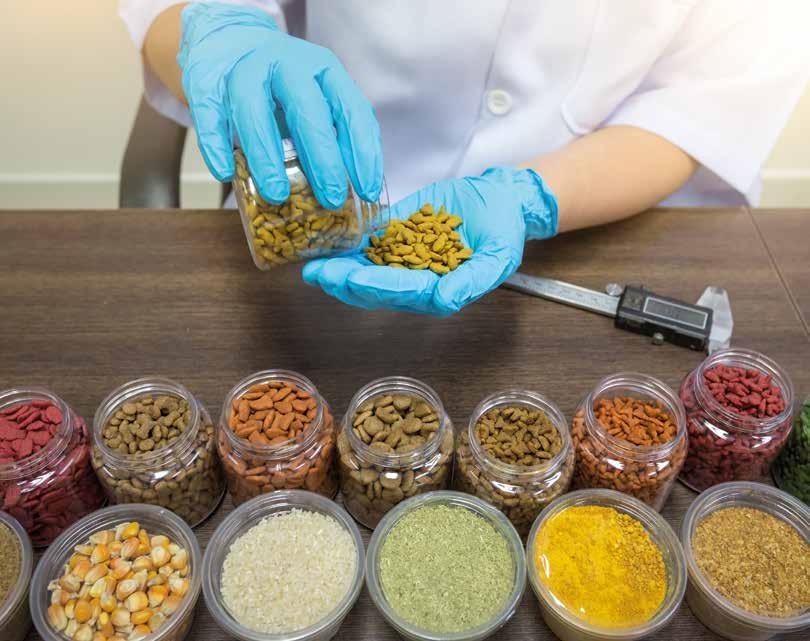 By All Pet Food
By All Pet Food
Despite the great variety of companies and ventures that currently exist in the pet food industry, advan ces and research carried out on certain topics are of great interest to all participants of it, regardless of the driving company or institution. The truth is that research dedicated to pet nutrition is a fundamental element that makes it possible for our market to keep on developing.
Research support
If we talk about research, we must mention Champion Pe tfoods, a Canadian company that has shouldered the commit ment to research to grow as an industry. This company has awar ded a 5-year grant to Guelph University, a leading institution in veterinary medicine and animal science, intending to advance quickly and continuously in various pet food research. Together with other international research experts, the University, thanks
to this grant, will be able to expand the fundamental knowledge of pet nutrition to different companies and organizations.
The faculty conducts research in nutrition, physiology, mole cular biology, behavior, reproduction, genetics, and more. Com bining industry experience and scientific knowledge guarantees high-quality studies and research with the correct orientation to offer the most appropriate solutions to the market.
14


Finally, what is remarkable about this event is not only the fact of advancing research that leads us towards a better industry but also the opportunity to train new students and leaders in the sec tor.
Lack of research means bigger gaps
The global pet food industry benefits from all market and aca demic research because shared knowledge creates expansion. Topics from veterinary medicine and animal nutrition to adverti sing and economics are essential when it comes to growing and improving the industry. However, lately, we have found that few researchers stop to assess whether the information flow they seek to provide will supply the knowledge that the industry needs to keep on evolving.
Lonnie Hobbs, a scientist who specialized in agricultural eco nomics at Kansas State University, questioned this: Do academic studies and industry reports provide the insights leaders need to grow?
To answer the question, he designed a questionnaire to assess what industry leaders expect from scientific research among se veral companies of different sizes, a characteristic by which the companies were divided to identify the specific needs of small, medium, and large ones.
Conclusions
Some of the conclusions obtained based on the answers to the questionnaire are:
• Large companies as well as small ones with less than 100 em ployees prefer to research in the production area. However, the leaders of medium-sized companies consider research in raw materials as the most important research topic
• Thus, some criteria interest all brands, regardless of their size. The ongoing conflicts and entanglements in supply chains are one of those: all companies would like to receive advances regarding raw materials and their sourcing to improve their operations. Many leaders consider there is a significant knowled ge and research gap on this topic.
• Processing methods and technologies are other topics that companies of all sizes consider a priority in industry research.
• Another aspect they all demand of great importance when it comes to research for the sector is predicting consumers’ tas tes and preferences
• The leaders also pointed to the search for new sustainable pro teins as the challenge they consider the most complex to overco me throughout the next decade.
Finally, we can highlight that all the leaders, regardless of what their company dedicates to or the current size, have highlighted the need to carry out research that obtains answers from real mar ket consumers. That way it is possible to know more about the cu rrent client of the pet food industry. The differences in perspective arise in the how: while small-scale companies consider consumer surveys and trend summaries a great option, medium-sized com panies prefer to focus on customer complaints. For their part, lar ge-scale companies highlight the use of external resources and internal customer feedback as the most significant information gaps.
A key factor: humanization
The participants overwhelmingly identified the humanization of pet food as one of the top trends driving the industry, suggesting that more research on the various ramifications of this trend is nee ded to guide market decisions.

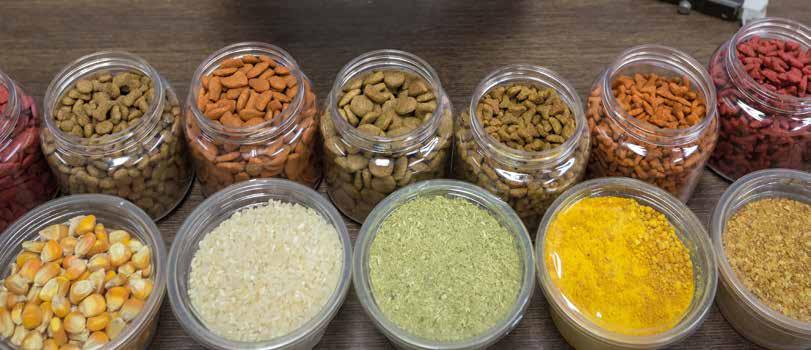
Conclusion
It seems like a paradox but effectively, defining how and what to investigate results in great exploitation of time and money invest ments to find advances or points of improvement and innovation in the industry. Conversations with sector leaders result in identi fying not only its importance to find funding and research spaces but also to identify the specific topics that pet food leaders need to know more about. The reason is quite simple: they are the ones who can best guide researchers on where to place their efforts, produce the most relevant results for the industry, and, at the same time, attract more funds for future research.
Undoubtedly, the collaboration between parties guarantees us all to provide the necessary resources for quality research for the benefit of the industry and, above all, of pets.
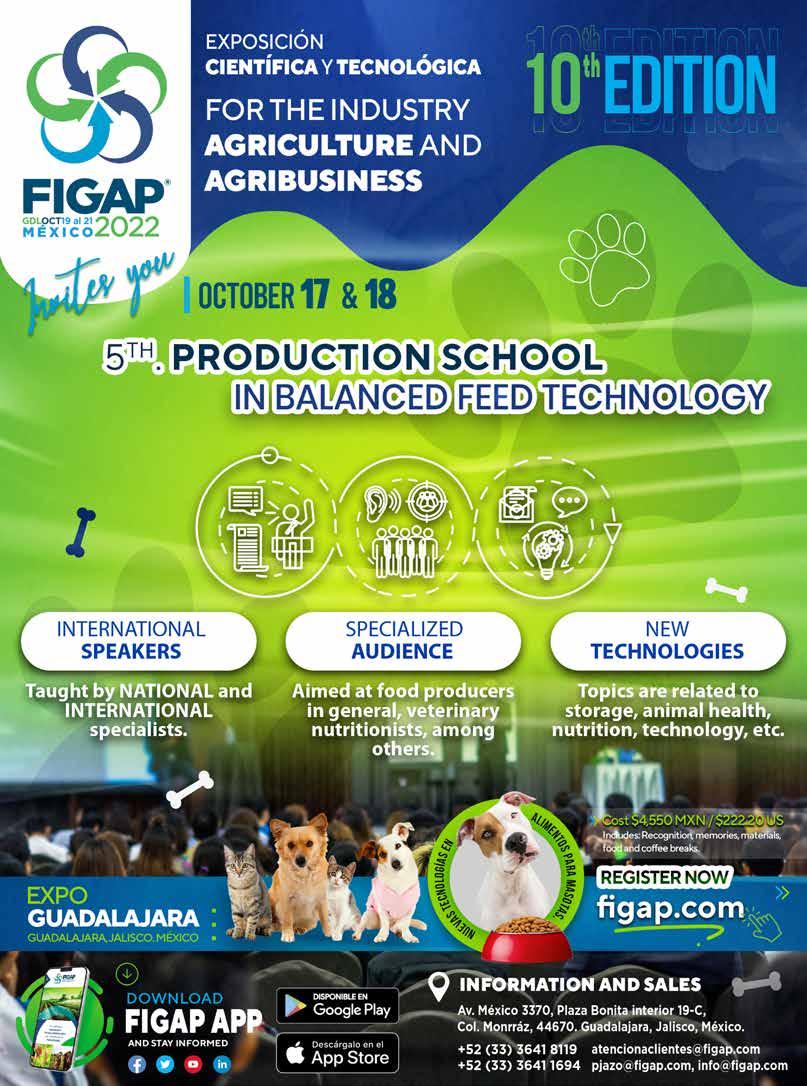
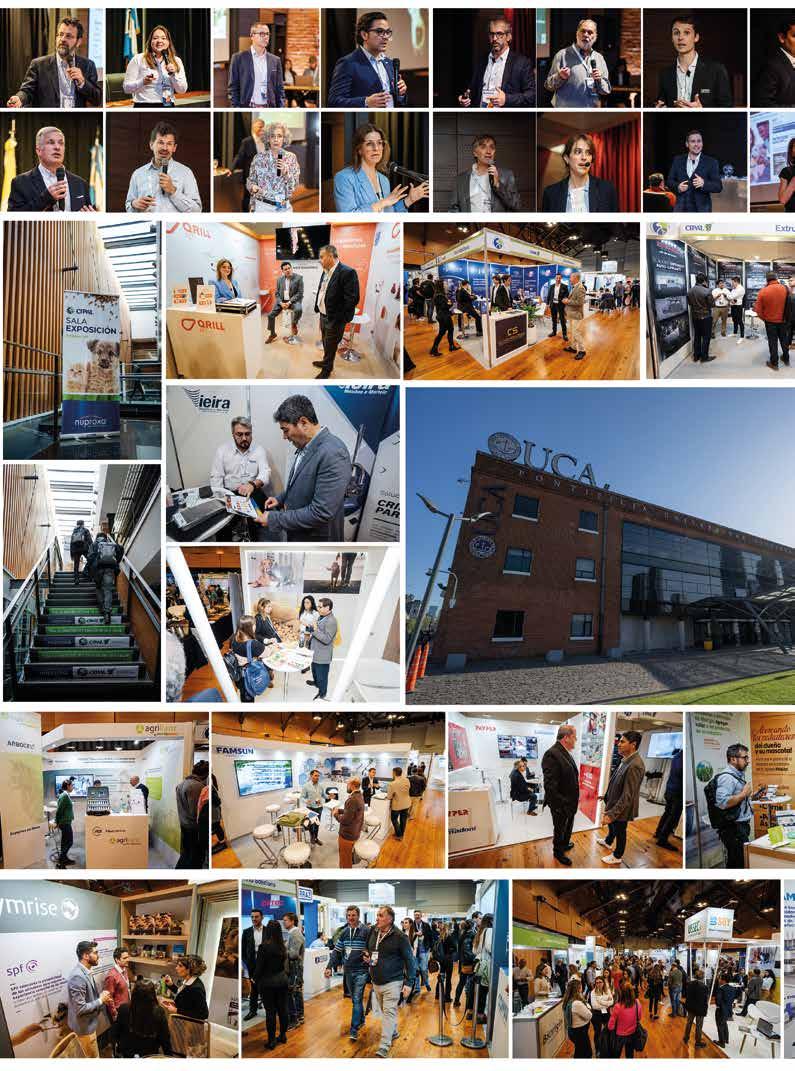
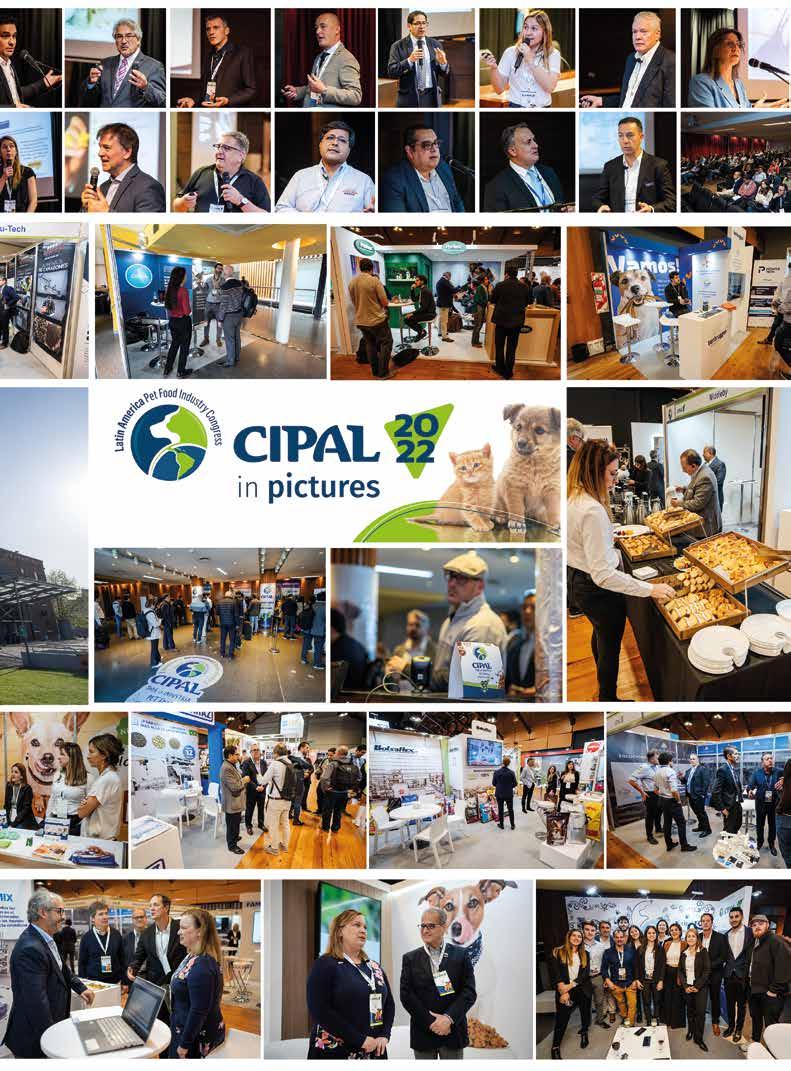
NEW BY-PRODUCTS FOR THE PET FOOD INDUSTRY
By All Pet Food
By-products are necessary to achieve an increasingly sustainable production chain. However, every day we see them subjected to prejudice and misinformation that makes them seem unhealthy because they are not human-grade meat.
Let’s know the context
Within the by-products category, we can find animal-grade in gredients that, if not used for the pet and animal food industry, would go to waste. In this sense, by-product meat use allows each piece, which would be waste, to be used efficiently, as long as it contributes positively to livestock and pet feeding. Howe ver, some by-products may not come from the meat industry but they are also a possible waste that, if the right way to use them is found, can improve the cyclicality chain of connected industries.
Non-meat by-products under review

Soybeans, corn, and peanuts
While cat and dog owners want brands to reduce resource use and environmental impact, they also reject all by-products as not being considered human-grade.
If we talk about non-meat by-products, we find protein from oilseeds and cereals from soybeans, corn, and peanuts. These
20
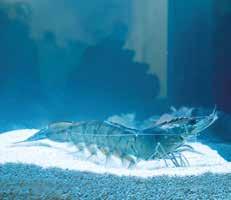


21 Contact Extru-Tech today at 785-284-2153 or visit us online at extru-techinc.com Capital Investment Extru-Tech Solution The Competition Operating Costs Ingredient Flexibility Complexity Operating Cost ($/M Ton) KEEP IT SINGLE. SINGLE SCREW EXTRUSION SYSTEM OPTIMIZES FLEXIBILITY AND MARKET OPPORTUNITIES Optimize the return on your capital investment with a single screw extrusion system. Buy one system and cost-effectively deliver product to multiple market opportunities. • One system capable of economy up to super premium fresh meat petfood • Aquatic feeds that range from floating to sinking shrimp feed • Capitalize on high margin petfood treat opportunities • Significantly lower operating cost per ton versus competitive systems As the chart below demonstrates, an Extru-Tech Single Screw Extrusion System provides all the flexibility and production efficiencies at around half the cost of competitive extrusion systems with high operating costs. 1.0 1.0 Excellent Low 1.08 2.5 1.60 Excellent High 2.80 PREMIUM PETFOOD PETFOOD SNACKS AQUA FEED vs P.O. Box 8 100 Airport Road Sabetha, KS 66534, USA Phone: 1-785-284-2153 extru-techinc@extru-techinc.com www.extru-techinc.com SINGLE SCREW MULTIPLE MARKETS
have traditionally been used in pet foods as sustainable, inex pensive, protein-rich ingredients. However, the ongoing demo nization of soy and corn-based ingredients hampers their use in pet food and snack formulations. In this sense, as an industry, we must work to keep on demonstrating the quality of protein and nutrient composition so that, little by little, they become ac cepted ingredients in pet food and treats.
Evidence
Diverse investigations and studies have tested the digestibili ty of amino acids in by-products in soybean flakes, peanut flour, soybean flour, and corn gluten flour. Pet food ingredients have been shown to contain a generally essential amino acid profile. Some of the conclusions are:
Only peanut flour showed a low lysine index.
Soybean and corn gluten flour had the highest amino acid di gestibility. Compared to the values recommended by the Ame rican Association of Feed Control Officials (AAFCO), the most limiting amino acid for adult dogs was lysine in peanut and corn gluten flour. For soybean flakes and flour, methionine was the limiting amino acid. For adult cats, the main limiting amino acid was lysine in peanut and corn gluten flour, while threonine limi ted soybean flakes. Finally, soybean flour did not present any limiting amino acids for cats.
In general, these high-protein, high-fiber, low-fat composition ingredients are said to be easy to incorporate into pet food for mulations. In addition, its varied amino acid compositions offer the opportunity to combine them to create complementary pro teins that meet the nutritional requirements of dogs and cats.
Meat by-products
Water buffalo
Today, most water buffalos live in Asia, where they have been domesticated. These animals provide milk, meat, leather, and labor. And, just like with cattle in the rest of the world, farming them results in by-products that humans can’t or won’t eat. Wa ter buffalo by-products, such as horns, lungs, and udders, can serve as novel ingredients for dog treats and chews, achieving a social benefit while reducing environmental impact.
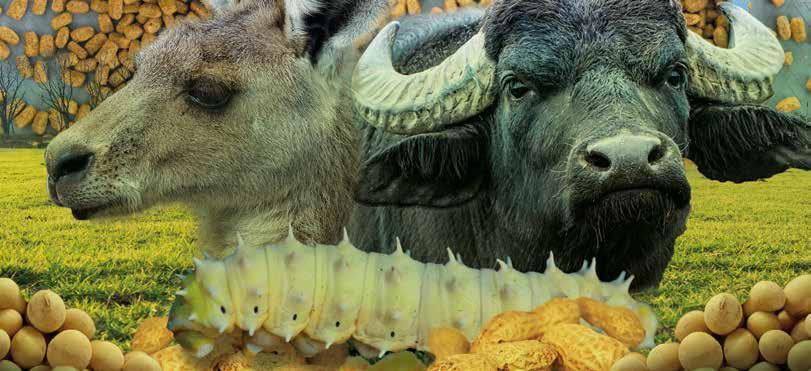
Kangaroo
Kangaroo seems like a new ingredient for the industry, but the truth is that dogs have eaten marsupial meat and co-products for thousands of years. But if we are talking about kangaroos properly, few have had the opportunity. Nowadays, some brands are testing the use of kangaroo, such as viscera, heart, lungs, and liver, as well as some parts not preferred by humans, such as tail bones.
Silkworm pupae

In Taiwan, an agricultural research station developed a means of using silkworms in cat food. Tests are being done on silkworm pupae after harvesting the cocoons for silk production. The cats that fed on canned food based on this insect presented less odor in their defecations and shiner fur. The director of the research station noted that silkworm pupae contain natural antimicrobial chemicals, proteins, fats, carbohydrates, chitin, and omega-3 fa tty acids. At a later instance, the technology developed at the research station was transferred to a biotech company to test mass production.
Tuna bone
The Thai company Thai Union Group PCL introduced a new product made from the by-product of tuna bones to the pet food market. This by-product would bring great benefits to bone heal th when consumed as a supplement in capsules or tablets or added to different types of food as an additive.
By-products hold great potential
The pet food industry represents a strong, growing, and ro bust global economy. However, as the market continues growing and expanding, it will create more waste and increase its nega tive impact on the ecosystem unless we, as an industry, do so mething about it. As the large sector that we are, both locally and internationally, we have the responsibility to seek alternatives to improve industry cyclicality, as well as to educate decision makers with kindness and scientific information when it comes to buying pet food products.

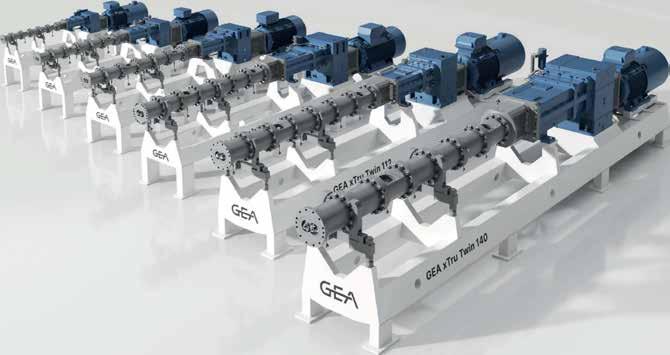
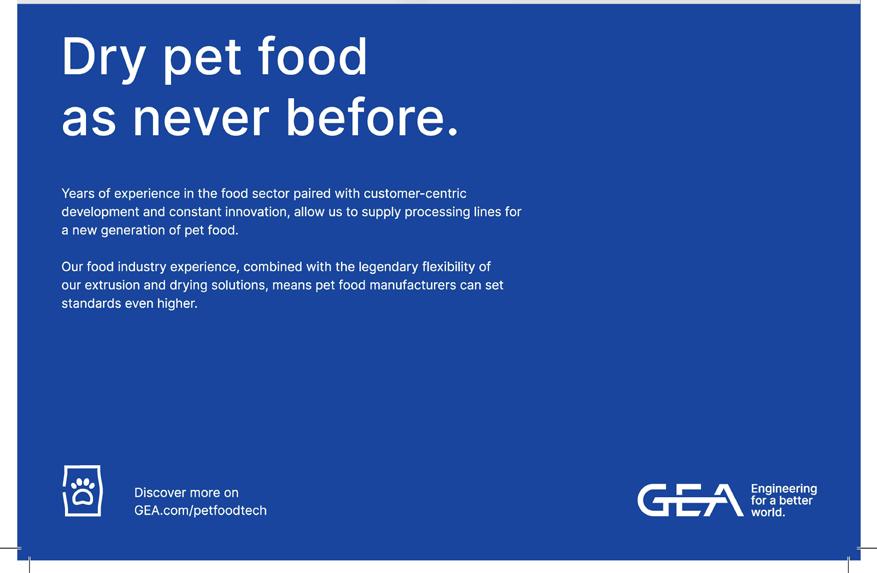 Kibbles Pillows Dental sticks
Kibbles Pillows Dental sticks
Hydrolyzed functional proteins:

IMPROVING HEALTH INSIDE OUT
José Daniel Fontana: jdfontana@iberianfeed.com - Enrique Fabián: efabian@iberianfeed.com lberianFeed Additives
Bioibérica - a global company in the life sciences sector- and Iberian Feed Additives from Mexico, a lea ding company in the commercialization of functional and innovative ingredients for animal nutrition, join forces to bring high-quality nutritional solutions to the Mexican pet food industry.
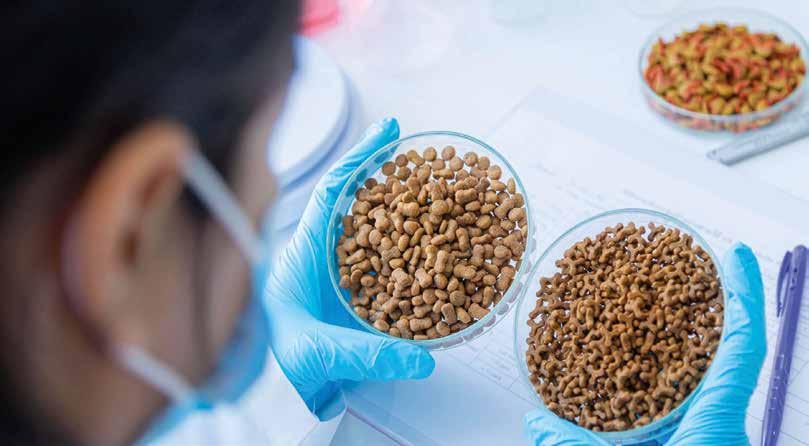
We take a holistic approach to pet health, developing func tional ingredients that span all major health areas, intending to improve pets’ overall well-being. We seek to inspire and unlock new opportunities for our customers through our high-quality, science-backed ingredients for pet food products.
Hydrolyzed functional proteins to improve health
Palbio® 62 SP is a raw material for animal feed based on highly digestible and palatable hydrolyzed porcine intestinal mucosal proteins that promote feed intake and contribute to intestinal health maintenance in pets and companion animals.
Enzyneer® Enzymatic Hydrolysis Technology


It is a safe source of high-quality proteins and functional peptides, obtained with a unique industrial process (EnzyneerB Enzymatic Hydrolysis Technology). This process gives rise to a product composed of L-a-amino acids and bioactive peptides, which positively impact animals’ intestinal health.
Palbio® 62 SP is a hypoallergenic ingredient, fully digestible, and highly palatable due to its composition of aromatic amino acids and peptides. It contributes to intestinal health mainte nance and contains bioactive peptides with different biological functions that provide nutritional well-being to pets.
A sustainable, natural origin product
Palbio® 62 SP is a sustainable product of natural origin, as its entire production process, which focuses on creating a circular economy. The raw material is a co-product of the pharmaceutical industry, and in its value creation process, a great amount of water is recovered, recycled, and reused in energy and other auxiliary materials, avoiding waste genera tion, harmful to the environment.
CAs shown in tables 1 and 2, Palbio® 62 SP is a high-quality protein that positively affects feed intake and intestinal health in monogastric animals.
In addition, other benefits have been shown in their general well-being and intestinal health:
High palatability
Compared to diets containing other animal and vegetable protein sources, feed intake improves.
In addition, other benefits have been shown in the general well-being of the animal and its intestinal health:
High palatability
Improves feed intake compared to diets containing other sources of animal and vegetable protein.
24
Hypoallergenic
Thanks to its low molecular weight of 600 daltons, it is conside red non-allergenic.
Functional activity
Palbio® 62 SP promotes intestinal cell selective proliferation, as well as the selective expression of genes in intestinal cells related to digestive health.
Digestive health
Genes related to barrier func tion, nutrient transport, digesti ve enzymes, digestive hormo nes, antioxidant enzymes, and immune response benefit from Palbio® 62 SP.
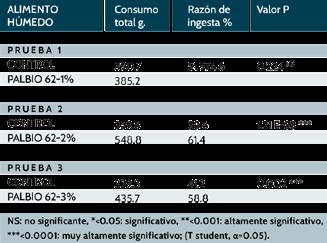

Palbio® 62 SP is suitable for all species, improving intestinal health and animal welfare.
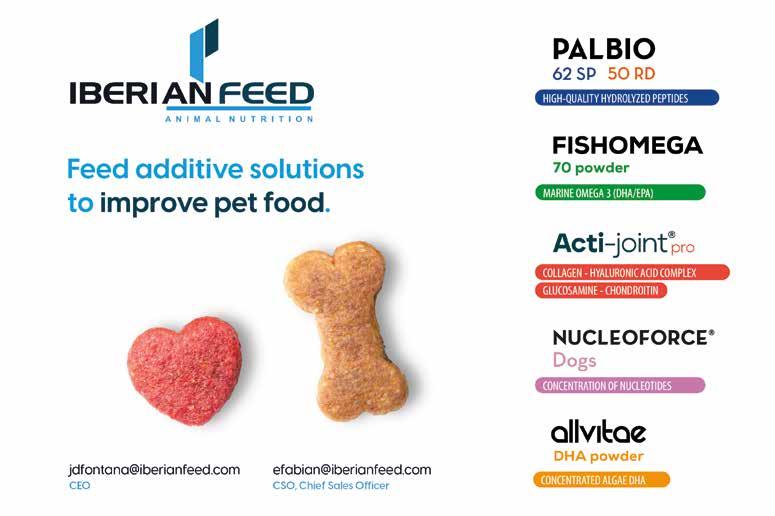 Table 1. Incidence of Palbio® 62 SP in dry food intake
Table2. Incidence of Palbio® 62 SP in wet food intake
Table 1. Incidence of Palbio® 62 SP in dry food intake
Table2. Incidence of Palbio® 62 SP in wet food intake
CONTINUOUS COATING: HIGH RETENTION TIME
By PLP System
PLP specializes in developing Continuous Coating applications and in croquette handling for pet food. It has more than 40 years of experience and various facilities worldwide.
The coating of pet food croquettes is an important phase of the process, as the external covering of a croquette is the initial contact with the animal as well as the main point of reference that the customer will trust.
The coating phase must be carried out to:
• Obtain color homogeneity in all croquettes
• Reduce oil loss and greasy look and feel
• Improve the distribution and homogeneity of palatant and flavoring additives.
• Reduce disinfection problems in the coating process.
CONTINUOUS COATING BENEFITS
• Pro: High-level of homogeneity (CV) can be obtained even with the addition of low amounts, being more flexible and kind with the production and the product itself.
Requirements for a successful application:
1. Performing croquettes dosing: The dosage must be ca rried out using continuous gravimetric weighing systems, not vo lumetric. The variation of the incoming product flow must be ad justed and stabilized by the proportioner to have a uniform output.
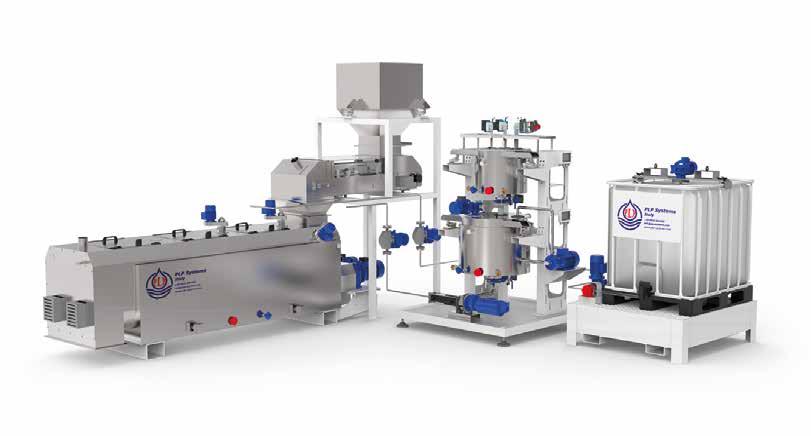
2. Covering: The team must be as gentle as possible with the product but should also guarantee good mixing homogeneity.
The retention time is essential when high amounts of oils are added, and should not be less than 60 seconds.
3. Atomization: Continuous atomization is a real challenge, especially when the product flow varies. Standard nozzles are always exposed to dirt and blockages.
26

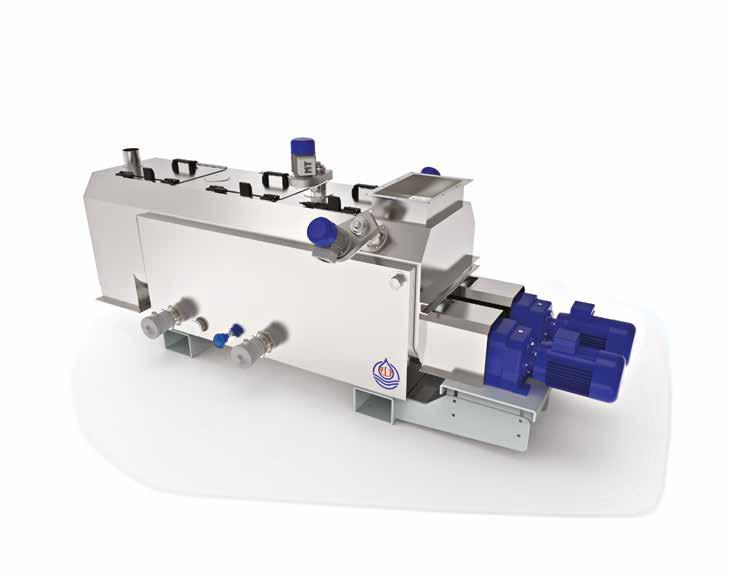

*Typical diagram of a continuous coating installation.
PLP recommends SMOG Technology for perfect atomization in any condition and viscosity.
In addition to the points mentioned above, there is another very important factor during the coating process, which will re sult in a more homogeneous final product:
HOLDING TIME
Homogeneity is also related to the absorption of fat by cro quettes. As for the process, this can be increased thanks to the combination of heat and croquette retention in the mixing phase in the covering.
The MT series is equipped with heating chambers that main tain a controlled temperature inside the machine, while the retention time is increased by:
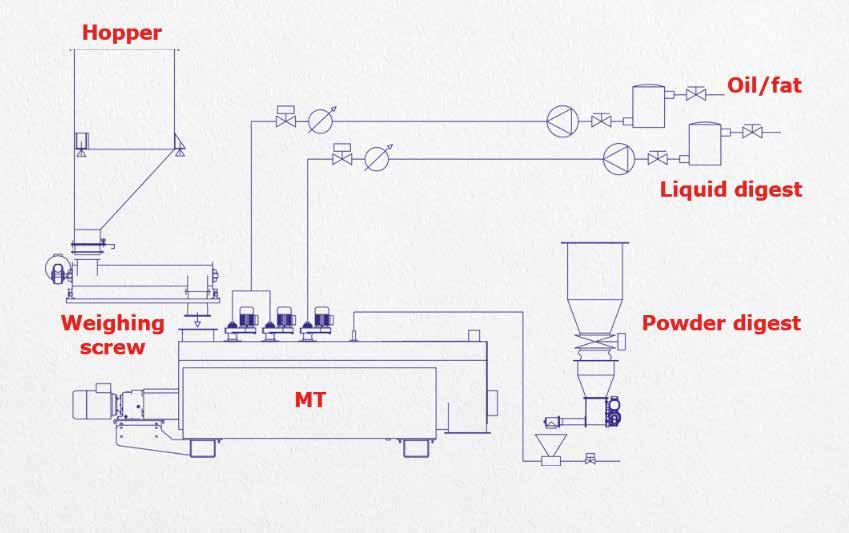
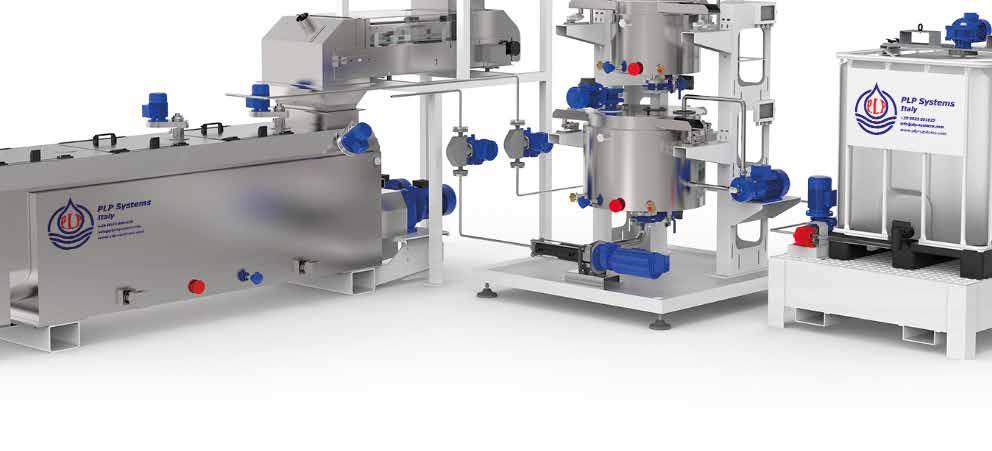
• Adjustment of the angles of the vanes
• Adjustment of the speed of the rotary axes
• Internal shock absorbers
RETENTION GATE
PLP has developed an automatic check gate, located at the outlet of the machine.
It is suitable for stopping the croquette flow and releasing it when product accumulation reaches a certain level inside the machine.

Thus, it significantly increases the retention time, up to 180 se conds inside the MT machine
To request information contact: info@plp-systems.com gonzalo.girelli@plp-systems.com 0039-3315010797
28

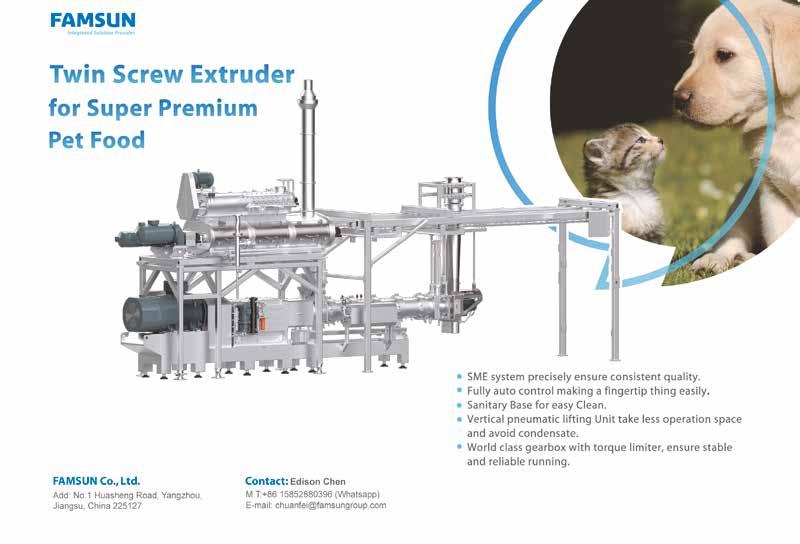
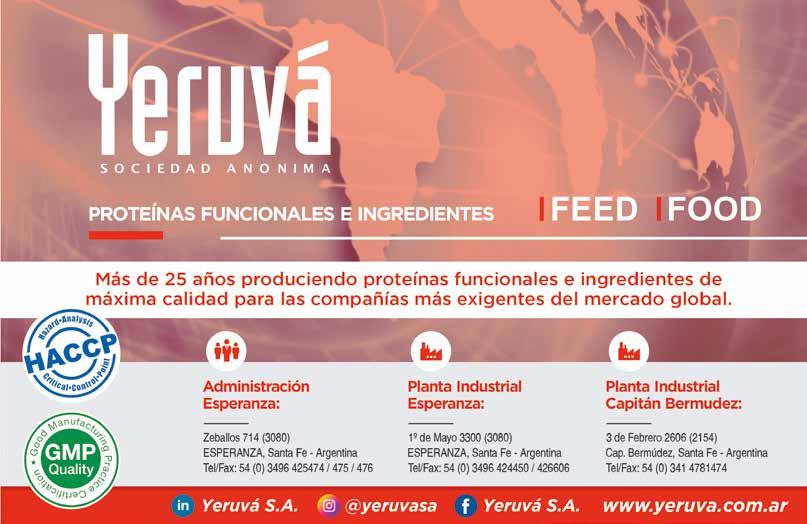
TECHNOLOGY SHOWCASE
In this issue of All Pet Food Magazine, we highlight the latest innovations that can optimize your pet food operations. We take a look at innovations from different leading companies in the Pet Food mar ket.
ARBOCEL® ADVANTAGES IN PETFOOD:
ARBOCEL® is the most inert and highly swelling fiber concentrate on the market - due to this, the stretch receptors on the stomach are activated and satiation is given.
Less Feces - ARBOCEL® is well able to increase digestibility and thus reduce the amount of feces by more than 20%
Dental Hygiene - ARBOCEL®´s fiber network stabilizes your formulation and is completely insoluble - this leads to a very smooth abrasive effect that is cleaning the teeth very gently.

Anti-hairball-effect- ARBOCEL®´s fine fiber network encloses the hair in its network structure and transports it out through the GI tract
Improved Faeces Consistency- ARBOCEL® ‘s ability to increase the nu trient digestibility leads to less undigested nutrients in the colon - thus less problems with undesired fermentation processes https://www.jrs-es.com/jrs_es/life-science/nu tricion-animal/aplicaciones/petfood/
CPM - HM SERIES 44” HAMMERMILL

The HM Series 44” Hammermill features a screen area of 1,920 to 5,760 square inches and an HP range of 50-450.
The HM Series Hammermill is designed for the most demanding opera tions and is the ultimate in grinding equipment. This rugged, high-effi ciency hammermill features a high-density frame that’s designed to mi nimize noise and vibration. This hammermill also features the air-swept teardrop design and Champion’s patented regrind chamber.
The HM Series Hammermill’s one-piece, full-access doors mounted on unique pivoting arms allow the doors to move completely out of the way during service. Talk to your CPM hammermill suppliers to learn about the highest-quality size-reduction equipment in the world.
CPM partnered with Bliss during 2021, broadening their product offering and expanding the customer base. Like CPM, Bliss’s equipment is respec ted for its world-class quality and durability
https://www.cpm.net/equipment/hammermills/ hm-series-44-inch
30
STATE-OF-THE-ART TECHNOLOGY
LAMINATION PROCESS - BOLSAFLEX
We have high-tech laminators that don´trequire the use of solvent and achieve greater production efficiency. We also have a solvent-based laminator for those cases that require its use.
We laminate all types of substrates: Biorien ted Polypropylenes, Cast, Metallic, Paper, Polyester, Saranized and Polyethylene.
https://bolsaflex.com/tecnologia/
SELO - OCELOT SERIES
Small, fast and no frills. The Ocelot series is the smallest of the Selo series. The ocelot is a very compact all-in-one line which includes all the necessary features. Equipped with a spreader system and a teflon belt the Selo ocelot series ensures a no frill, smooth consistent and efficient production process with a capacity up to 250 kg of meat chunks per hour.
APPLICATION:
• Cat food
• Dog Food
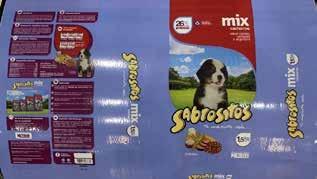
SPECIFICATIONS / ADVANTAGES:
• Capacity; Up to 250 kg meat chunks per hour
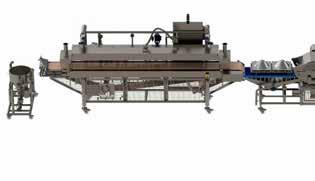
• Different programs settings possible; precise heating tailored to unique product specifications
• Hygienic design, making the line easy to clean (EHEDG)
• Teflon steam tunnel belt
• All-in-one package, complete production process
https://www.selo.com/product/ocelot-series/
HIGH BARRIER MONO-MATERIAL PACKAGING - 100% RECYCLABLE ALUMINUM, PVDC, AND EVOH FREE

Developed to replace multilayer barrier structures, this mono-material packaging has unique characteristics, in addition to being produced with 100% polyethylene (PE), and providing a high barrier to OTR and to WVTR. Its sustainability is for its fully recyclable condition.
The film is initially intended for the production of animal nutrition pac kaging but can also be used in other segments of the flexible packaging chain.

For more information about the product: sustainabilitye@fcogroup.com.br
Comunicación:
Viviane Carrer Dal Bello
Correo: mkt@fcogroup.com.br Teléfono: +55 48 3466 6284

CCommunication:
Viviane Carrer Dal Bello
E-mail: mkt@fcogroup.com.br Phone: +55 48 3466 6284
Comercial Export:
Gabriela Manfredini Smania
E-mail: gabriela.smania@fcogroup.com.br
Phone: +55 3466 6251 www.plaszom.com.br | www.fcogroup.com.br
31
SPECIAL AND NATURE-FRIENDLY PACKAGING
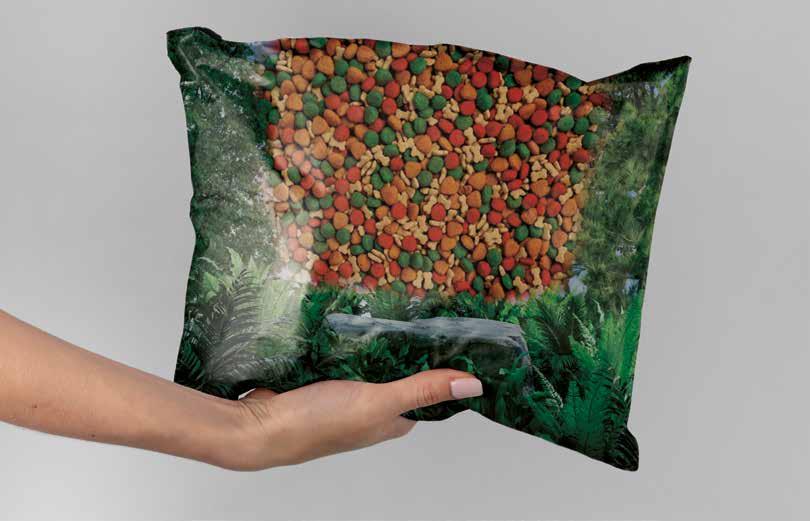 By Soulpack
By Soulpack
Soulpack is a Brazilian company that focuses on special and intelligent packaging with added value, which also carries the experience of its partners for more than 50 years of working in the market.
Innovation, technology, quality, sustainability, and sa fety are the stars of its developments, where its main ac tivity occurs in the Latin American and Brazilian pet food segments.
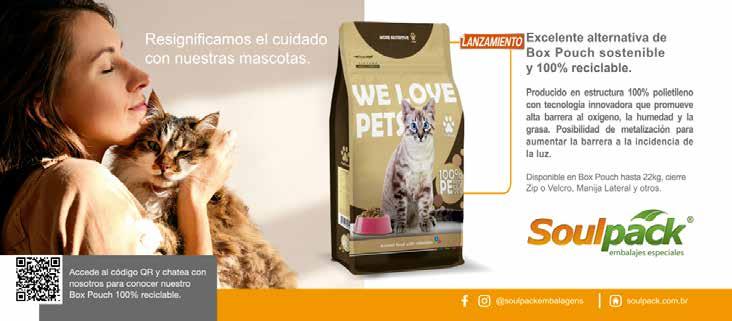
Its product line includes the flat bottom Box Pouch, Stand up Pouch, Shape Pouch, and 4 seal formats. The main benefits of Soulpack packaging are:
• Its modern design, which enhances the product.
• Closure with Zipper or Velcro Ⓡ, which maintains food pro perties.
• Easy opening system that cuts straight.
• Handle to facilitate transportation.
The pet food industry is a fast-growing segment, as is the
change in pets’ eating habits and their owners’ behaviors. Soul pack invests in technology to accompany the market and main tain packaging efficiency and performance, but it does not stop thinking about its commitment to nature.
Therefore, seeking excellence in packaging combined with sustainability is essential. Its processes are designed to avoid negative impacts on the environment. All development stages respect that value, from the correct usage of natural resources to the production inputs disposal. Soulpack’s environmental management allows it to produce various packaging types with conscious resource usage.
“We believe that sustainability is the future and, for this reason, we also have environmental initiatives through our packaging,” says R&D manager, Emerson Silva.
Committed to this value, we have developed two new packa ges, presented at CIPAL 2022:
100% recyclable packaging with a high barrier
Structure: PE + PE / Monomaterial
Characteristics: High barrier against grease, humidity, and oxygen.

Use: Human and animal food
Format: Box Pouch, Stand-Up Pouch, 4 seals, and others
Printing: flexography and gravure
Accessories: laser cutting guide, internal zipper, front zipper, velcro, and others.
Biodegradable packaging
Structure: PE, PET, BOPP, KRAFT PAPER, and others
Characteristics: Biodegradable containers, with technology that accelerates degradation converting the containers into humus for use in agriculture or in biogas to generate energy (according to ASTM 5511).
Use: Human and animal food
Format: Box Pouch, Stand-Up Pouch, and others
Accessories: Laser cutting guide, internal zipper, front zipper, and others.
Soulpack is proud to be a supplier of great clients that work to guarantee nutritious, formulated food to maintain animals’ health and well-being.
Contact us to find out more about Soulpack’s special packaging.
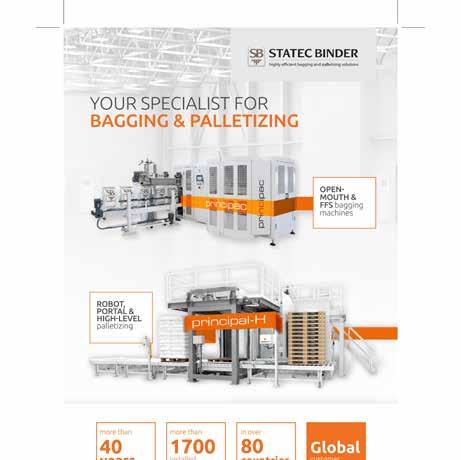
Website: www.soulpack.com.br
Contact: export@soulpack.com.br

INDUSTRIAS
BARTOLI HNOS S.R.L.
PLANTAS COMPLETAS EQUIPOS
MASCOTAS (Pet food)
PECES (Acuicultura)
EXTRUSIÓN Mezclas de exportación


Ruta 32 e Intendente Rivero - Parque Industrial (3133) María Grande, Entre Ríos, Argentina Tel: 0343 486 2707 info@bartolihnos.com.ar - www.bartolihnos.com.ar

33
HOW CAN WE INNOVATE IN THE PET FOOD INDUSTRY?
 By MVZ. Armando Enríquez de la Fuente Blanquet
By MVZ. Armando Enríquez de la Fuente Blanquet
Innovation is usually associated with the idea of progress and searching for new methods, starting from the knowledge that precedes it, in order to improve something that already exists, solve a pro blem or facilitate an activity.
According to the Dictionary of the Royal Spanish Aca demy (RAE, for its acronym in Spanish), the word innovation refers to the creation or modification of a product and its introduction to the market.
Nowadays, there are a lot of pet food brands striving to attract consumers to buy their “innovative” foods. Looking at this effort to attract pet owners’ attention, we find products with charac teristics such as: grain-free, breed-specific, healthy properties, original diets, exotic ingredients, fresh ingredients, and the like.
To develop an innovative product, it is necessary to define the category and the coverage, know the latest market launches (graph 1) and investigate the consumer.
If we see the graph to analyze the declarations shown in the products launched to the market in a year, we observe that two categories stand out: clean labeling, a trend of human consump tion, and the health issue, which is worth mentioning the impor
tance of protein content, as well as its source.
When we investigate the consumer, we should ask our selves: what is the pet parent looking for in the purcha se? Market releases largely answer this question, but my answer would be: pet performance! Pet performance should be seen by their parents with a naked eye, which means: the pet enjoys the food (palatability), looks healthy (hair and feces quality), understands the commands of their parents (improved cognition), is always alert to inte ract (energetically), and last but not least, their see the pet happy!
In many cases, innovation is strongly linked to creativity, dis covery, and invention. Therefore, a creative process is necessary to make changes that involve introducing something new.
Pet food innovation can range from modern packaging, either to maintain a nutritional value or improve sustainability, which can contain:
34
• High-quality ingredients (human-grade)

• Superior shapes and textures (state-of-the-art manufac turing processes)
• Connection with the pet owner (breed, age, health bene fits, simple and clear information)
• Meet a pet need (nursing homes, active dogs)
• Special ingredients (protein source, probiotics, prebiotics, organic minerals)
La innovación de un alimento para mascota puede ir desde un envase moderno, ya sea para mantener el valor nutricional o por ser sustentable, puede contener ingredientes de alta calidad (grado humano), con formas y texturas superiores (procesos de fabricación de última tecnología), conectar con el dueño de la mascota (raza, edad, beneficios a la salud, información simple y clara, etc.), cumplir una necesidad para la mascota (geriátricos, perros activos, etc.), incluir productos especiales (fuente de pro teína, probióticos, prebióticos, minerales orgánicos, etc.), entre otros.
One way to innovate is by optimizing nutrients to provide an extra nutritional value beyond the basics. We should remember that pet performance is achieved when they have nutritional precision, which is achieva ble with the use not only of correct nutrient levels but with high-quality raw material sources selection. This makes food more digestible, more bioavailable, safer, and, above all, guarantees that the nutrient reaches the pet’s mouth in the precise amount.
Saying “vitamins and minerals” requires us to take care of micronutrient sources to ensure that a portion of food contri butes to what a pet needs. There are commercial presentations of vitamins in crystals, spray-drying, microspheres, cross-linked or armored, and each of the above has different stability and bioavailability. Making a good choice will allow us to guarantee that statement. On the other hand, there are also different trace minerals sources. They range from inorganic minerals (sulfates or oxides, which have a high reactive power due to their high so lubility, and therefore, are capable of binding or degrading other
nutrients in the diet) to organic minerals or hydroxy-minerals sources that are more bioavailable, less reactive and that favor food consumption.
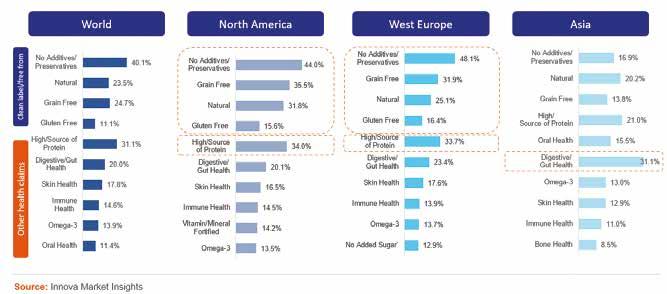
In the quest to provide better pet health, science-based ingre dients must be used to guarantee the performance that the pet parent is looking for. For example, when talking about streng thening the defenses of the dog or cat, one way is to support the immune system through the correct contribution or combination of biological antioxidants to the dog or cat’s body, such as vita min E, vitamin C, carotenoids, polyphenols, etc. Another way to stimulate the immune system is through polysaccha rides consumption, such as beta-glucans that will help activate macrophage receptors.
When we affirm skin health, we are offering external health, which is a sign of integral health indirectly, since any pet owner will observe it with a naked eye, not only for the love of their pet but because they will show a healthy coat (shiny and strong hair). In this case, there are different tools or strategies to achieve opti mal skin and coat quality, as well as the use of adequate vitamin H (biotin) levels beyond nutritional needs, the inclusion of highly bioavailable sources of trace minerals such as zinc, copper, or manganese, or working with adequate levels and reliable sour ces of DHA-omega-3, whether of animal (fish) or plant (seaweed) origin.
One statement well associated with pets’ integral health is nutritional value focused on joint health. In this category, some ingredients have a certain chondroprotective function and, in addition, can offer an anti-inflammatory benefit to the joints, such as glucosamine, chondroitin, type I and type II collagen, DHA-omega-3 or egg hyperimmune proteins.
To conclude, we can say that innovation is making great use of creativity, which means that we do not need a new process or ingredient, but what we already have correctly, efficiently, and always with the evidence that it will work for the pets benefit, and most of all, fulfilling the declaration that the pet parent is looking for.
Grafica 1. Principales declaraciones de propiedades de salud global y por región (% de lanzamientos) (últimos 12 meses fin al 3Q2021)
THE APPLICATION OF SPIRULINA AS AN INGREDIENT IN FOOD FOR DOGS AND CATS
By Liliane Palhares, Ludmila Barbi y Erika Stasieniuk
Spirulina cyanobacteria is a prokaryotic microorganism that has 35 identified species (VENKATARA MAN, 1997). The Spirulina Platensis and Spirulina Maxima species are the most studied as they present a significant amount of nutrients when used as a food supplement.
They are a source of amino acids (approximately 65% of crude protein), minerals, vitamins, gamma-linolenic (GLA), eicosapentaenoic (EPA), and docosahexaenoic (DHA) fatty acids. They also present approximately 15% of bi liproteins (C-phycocyanin, allophycocyanin, and phycoerythrin) (TAKEUCHI et al., 2002), with a powerful antioxidant action de monstrated in in vitro studies and in some animal species. Due to its chemical composition, immunomodulatory effects have been attributed to this ingredient in humans and animals.
Compared to other substances used as antioxidants in animal feed, the alcoholic extract of Spirulina inhibited lipid peroxidation more significantly (65% inhibition) than alpha-tocopherol (35%), BHA (45%), and β-carotene (48%). The antioxidant activity of Spirulina has been attributed to the synergism of the antioxidants present since extraction with hexane, petroleum ether, ethanol, and water show antioxi dant activity, demonstrating the presence of compounds of a different chemical nature in Spirulina composition. An important aspect is the more powerful activity of the aqueous extract of this algae, even after polyphenol removal, which suggests the presence of water-soluble compounds with an important antioxi dant action (CHOPRA & BISHNOI, 2008).
Phycocyanin is extracted from Spirulina Platensis and can act in the retention of free radicals and iron chelator and protect the activity of antioxidant enzymes (MIRANDA et al., 1998). Oxida

tion and inflammation play a key role in many diseases, including degenerative diseases. The formation of free radicals is related to the immune system weakening and aging. In vivo, Spiruli na can reduce markers of brain oxidative damage and reverse age-related increases in proinflammatory cytokines (GEMMA et al., 2002), substances necessary for the inflammatory response. Antioxidants consumed as part of the diet are essential to pro tect cells from damage caused by free radicals.
Antioxidants have been investigated for their ability to influence the immune system, especially in the inhi bition of tumor genesis in laboratory animals, in the modulation of the inflammatory response, in the regulation of the production of certain cytokines in vivo and in vi tro, and in the phagocytic activity of macrophages (BOR CHERS et al., 2009).
Spirulina also has some glycolipids (O-β-D-galactosyl-(1-10)20,30-di-O-acyl-D-glycerol), which have immunological cha racteristics similar to microorganisms’ cell wall components of microorganisms, functioning as Toll Ligands, which, in turn, stimulate especially TLR-2 and TLR-4 receptors. Therefore, these foods are recognized as “foreign elements” to the body and sti mulate the immune response. (HAYASH et al., 1994; BORCHERS et al., 2009).
Small daily amounts of Spirulina may have various
36
health benefits for dogs and cats. Several studies in the nutritional and immunological areas mentioned below have identified Spirulina inclusion in pet food offers many benefits in promoting animal health.
One of the main Spirulina benefits is its role in immune rein forcement. It works by helping and improving the intestinal mi croflora and this, in turn, helps improve immune and intestinal health (REYNOLDS & SATYARAJ, 2014).
LABRES (2012) demonstrated that Spirulina usage up to the 3% level in diets is safe in dog food formulas. In the inclusion of 1%, there was seen a reduction in the production of interleukin 10 (IL-10) by the mononuclear cells of dogs fed with Spirulina, which seems to be related to the better oxidative status of the animals, verified also by lower serum concentrations of thiobar bituric acid reactive substances (TBARS).
A healthy digestible system allows a better nutrient usage, especially of Spirulina itself, stimulating the immune system and increasing the body’s ability to gene rate new blood cells, as well as suppressing harmful bac teria from the gastrointestinal tract such as Escherichia coli (MANCHESTER et al., 2013).
Studies show that Spirulina has an immunostimulatory effect by increasing resistance to infections through antibody stimulation. In cats, an increase in the macro phages’ phagocytic activity was found in the presence of Spirulina, which means greater effectiveness in germ elimination (QURESHI & ALI, 1996). Dogs fed with Spi rulina-supplemented diets had higher vaccine (rabies) responses and higher fecal IgA levels, compared to dogs that did not receive Spirulina in their diets (REYNOLDS & SATYARAJ, 2014). Therefore, animal immunity and resistance to diseases are increased, and Spirulina use can reduce the need for antibiotics and other drugs.
Spirulina application is still timid in the pet food industry, yet we see some supplements and specific foods that contain this ingredient as a functional one. There is still little information on the application of this ingredient in the process of preparing extruded or cooked diets at high temperatures. Some experts suggest embedding it in an oil bath after the extrusion process. However, further stu dies are needed to assess the feasibility of using Spiruli na in industrialized products for dogs and cats.
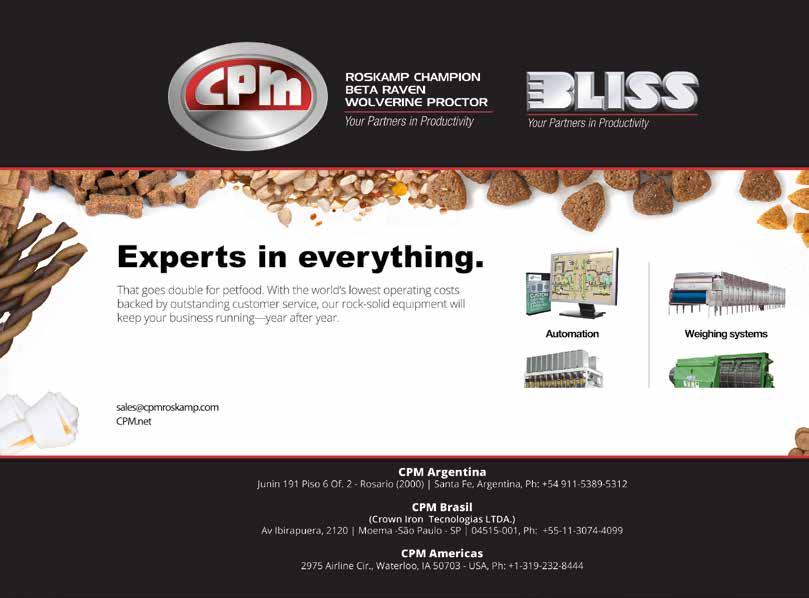
THE INTERVIEW
DANA BROOKS

CEO at Pet Food Institute
By All Pet food
GOOD SCIENCE IS NEEDED - NOT DISRUPTORS
What does the Pet Food Institute do in the industry? What could you say about its mission?
The Pet Food Institute’s goal is to support the industry as the voice of U.S. pet food and treat makers. PFI is the industry’s re presentative before Congress and state legislatures, as well as state and federal agencies; a public education and media rela tions resource; an organizer of seminars and educational pro grams; and a liaison to other organizations.
Is there any current research in the industry that you consider a disruptive factor in its growth?
I don’t think there’s research that is a disruption. Good science is needed - not disruptors.
PFI’s research group focuses mostly on food safety.
How do you think the post pandemic pet food industry will keep on developing?
Our members’ goal is always to provide safe products that pro vide complete and balanced nutrition to dogs and cats. That goal will not change. One thing that we have seen is that post-pande mic, more American households than ever have a pet – about 70% now. This rapid growth, in addition to the sourcing issues due to renewable diesel mandates and trucking issues, will con tinue to create supply chain issues moving forward. PFI conti nues to advocate for solutions to improve supply chain issues and support the needs of pet lovers and their pets.
How do you think that people’s trends and habits im pact their pet ownership?
One big area we see this in is the increasing concern over pet obesity. Over 50% of American pets are currently overweight or obese. This, unfortunately, leads to a host of health issues for the animal including diabetes, joint, and heart issues. Studies show that a dog at a healthy weight can live up to 2.5 years longer than one that is overweight. During the pandemic, more Americans were home with their pets, and pets were being fed more treats and toys filled with peanut butter to keep the pets calm while people worked. Since less than 10% of a pet’s daily caloric intake should come from treats, this created an unhealthy situation. That’s why Pet Food Institute launched the Your Pet’s Healthy Weight campaign to educate consumers on the dangers of pet obesity and encourage them to work with their vets to attain a healthy weight.
Sustainability is one of the most important initiative nowadays. What do you think of it? How is the company embracing it?
The pet food industry is embracing ideas that will make its operations more sustainable. Some of those efforts are hindered by regulatory challenges like the length of time it takes to get approval on new ingredients. PFI members take several different steps to support continued sustainability in the manufacturing of pet food. This can include steps such as investing in packa ging advancements to minimize waste and maximize recycling to reducing water and energy use at manufacturing sites and avoiding competing with the human food supply.
From responsible ingredient sourcing to on-site manufacturing and packaging, PFI members are finding multiple ways to advan ce the sustainable production of pet food. That’s why the Pet Food Institute is working with the Pet Sustainability Coalition and we have created a Sustainability Working Group – to proactively search for ways to become more sustainable. The Pet Sustaina bility Coalition’s Earth Day campaign is one example of how the industry is coming together to be more sustainable. During Earth Day 2022, pet industry professionals came together to complete over 10,000 earth-friendly actions.
What challenges could you say are the most difficult to overcome for the industry nowadays?
One of the biggest challenges are supply chain issues partially caused by mandates and incentives for renewable diesel use. In an effort to address climate change, the government is providing incentives to farmers to use animal and plant oils traditionally used in pet food and for human consumption to be used in the creation of renewable diesel. This is causing unintended conse quences in the supply chain in the form of ingredient shortages and drastically increased ingredient costs for pet food makers.
The lengthy, time consuming and expensive process of get ting new and innovative ingredients approved for use in pet food. This process can take upwards of 5 years making it difficult for pet food makers to implement new research and sustainable practices to provide the best nutrition possible for pets. A key example of this is the use of insect proteins. Currently, there is tentative approval to use only one ingredient – black soldier fly larvae - in dog food. However, there are other high-quality insect proteins that could be used in pet foods if the approval process were more efficient and harmonized. This delays bringing highly sustainable ingredients to market at a time when the govern ment is seeking to reduce carbon emissions.
39
PACKAGING VARIETY IS NOT AN ISSUE… IF YOU HAVE THE RIGHT SOLUTION
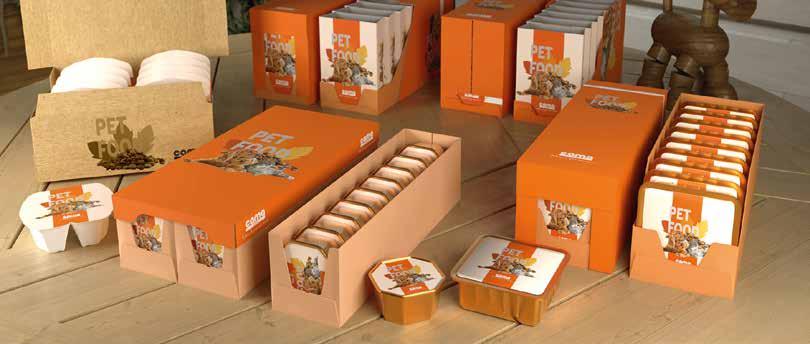 By Cama Group
By Cama Group
From tins, through trays and pouches and back to tins again! The pet food industry never stays still, but what can you do to keep pace?
The majority of pet owners will tell you that their pet is consi dered a member of the family; but it is only relatively recently that this familial status has been reflected in the way we feed them. Go back 10-15 years and all you would find on supermarket shel ves would be a limited number of food varieties in standard 400g tins, with multipacks all containing the same variety.
Fast forward to the present day and it is fair to say that the pet food industry has undergone a renaissance. Owners are now spoiled for choice as they face walls of exotic flavours, made from premium healthy ingredients, prepared (it appears) by Michelin-starred chefs, packa ged in innovative containers and backed by multi-million Euro advertising campaigns.
This incredible level of variety and product differentiation ma ybe good for the owners (and of course their pets), but it crea tes a logistical nightmare for the producers’ manufacturing and packaging operations. Not only do they have to cater for a wider choice of flavours and packaging formats, but they also have to create mixed packaging arrays that deliver the all-important die tary variety.
“It’s a pain point,” explains Wim Kruikemeijer, Area Manager Northern Europe and Global Petfood Manager at Cama Group. “Many people no longer want to feed their cats or dogs the same flavour every day, so there has been an incredible pull from the market for greater variation. This is good for the animals too, as it delivers greater dietary variety. As a result of this, many of the premium pet food suppliers are looking to mix flavours and then package them in shelf-ready cartons – with as
many as six flavours in each carton. If this is undertaken manua lly, it is an incredibly labour-intensive task.
“There has also been a major shift away from the typical 400g tin,” he adds. “The humanisation of pet food has resulted in more premium-look-and-feel packaging – on a par with human food packaging – with single-portion servings of fresher food gai ning significant headway in this crowded market. Compounding these widely varying demands is a growing decline in plastic ac ceptance, which is seeing a move back to metal and recyclable packaging, albeit in varying sizes. Manufacturers have certainly got interesting times ahead and, as a result, so do the packaging technology companies.”
In a typical wet pet food operation, the meat is prepared, ste rilised and packaged before being quarantined for up to a week to catch any quality issues before going to market. After the qua rantine period all the flavours are collected, mixed offline and then packed into secondary cartons and boxes. This secondary packaging is either fully automated, semi-automated or, in many cases, completely manual.
“For one plant we support, the first step towards their wider automation was a semi-manual process for creating and closing the cartons,” Kruikemeijer explains, “but this is just one exam ple of the way that companies can move towards automatic pac kaging processes. Our technology allows companies to match their aspirations and take gradual steps; it totally depends on the customer and how they want to achieve their automation levels.”
Cama is in the perfect position to help pet food companies – both large and small – to realise greater efficiencies through the automation of packaging operations. “We’ve been suppor ting this industry for over 15 year now,” Kruikemeijer elaborates.
40
“We have helped many companies across the globe absorb the impact of changing market dynamics. We’ve seen the natural progression of packaging, starting with cans, onto trays, into pouches and now back to cans again. We’ve also addressed the multi-flavour issue thanks to tightly integrated and highly flexi ble automation infrastructures and in-house-develop robotic pick-and-place systems. Indeed, this industry is not unlike the coffee industry, in which we are a market leader, with its huge variety of packaging concepts.
“The pet food industry – like the many other sectors we ser ve – is always laying down packaging challenges that centre around the need for flexibility coupled to efficiency,” he adds. “We are in a fortunate (and deliberate) position in that we invest at least 5% of our turnover in research and development, and it is this investment that helps us help our customers. Cama also has a unique portfolio of technologies that covers the breadth of packaging concepts and packaging formats. Thanks to this spread, we can offer best-fit solutions, rather than a compromise based on a limited offering. In fact in many cases we suggest two or three packaging concepts and then work with the custo mer to define the strategy and technology that fits their needs precisely.
From a technology perspective, Cama’s Breakthrough Ge neration (BTG) solutions are setting the standard in secondary packaging. The BTG approach comprises modular, scalable fra meworks that offer easy entry and access, coupled to a hygienic
machine design. Within this framework, contemporary automa tion solutions, including advanced rotary and linear servo tech nology, can be tightly coupled to in-house-developed robotics, to deliver the all-important flexibility and adaptability required by modern packaging operations.
“Cama, as a company, is highly flexible and offers the capa bility and mindset to think outside the box, not just as a machi ne manufacturer,” Kruikemeijer explains. “We’re more and more thinking like a line-side operator or maintenance engineer, ima gining how we can make our machines even easier to use and maintain. We are capable of listening very carefully to the custo mer and what keeps them awake. This is part of our uniqueness. Sometimes you need to learn from the customer and then think almost like a child. ‘Is it too complicated?’, ‘Can we make it sim pler?’ and ‘How do we keep it practical?’

“We have multiple successes under our belts, from some of the world’s leading brands… and lots of small local ones too,” Kruikemeijer concludes. “They all have the same challenges, just on a different scale. The future will centre around sustainability and this will be compounded by shorter product lifecycles, so flexibility is paramount if an end user is to get the best possible return from their automation investment. The whole of industry is undergoing the same type of paradigm shift, and we see it as a personal responsibility to make sure our customers can all stay ahead of the game.”
Providing the best Solutions for the Extruded Pet Food and Aqua Feed Industry


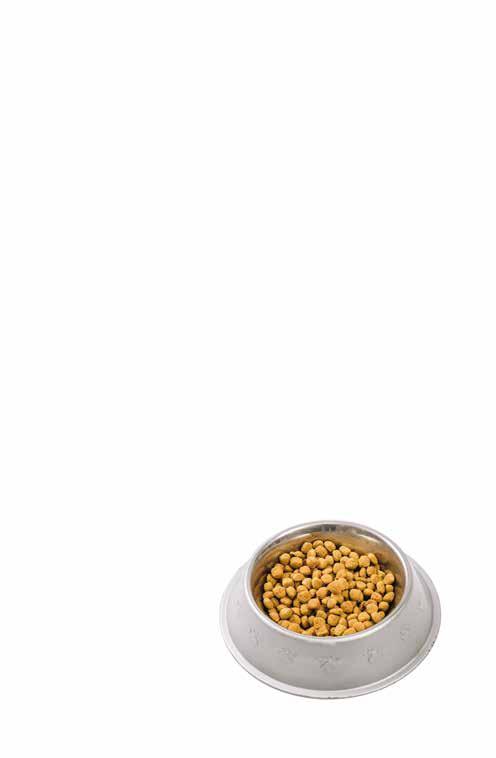
Projects: Focused mainly on companies manufacturing Extruded Pet Food and Aqua Feed, we develop Projects for complete or partial plants.
Solutions: We o er consulting work and provide Solutions to improve the E ciency and Quality of your Manufacturing Processes.


Representations: We only work with Associated Companies that can o er the Highest Quality of products and Services for our Customers.



francisco.pantoni@cliviosolutions.com+54-9-2352 54-0040 www.cliviosolutions.com
WENGER MANUFACTURING BRAZIL – A MODEL FACILITY IN LATIN AMERICA
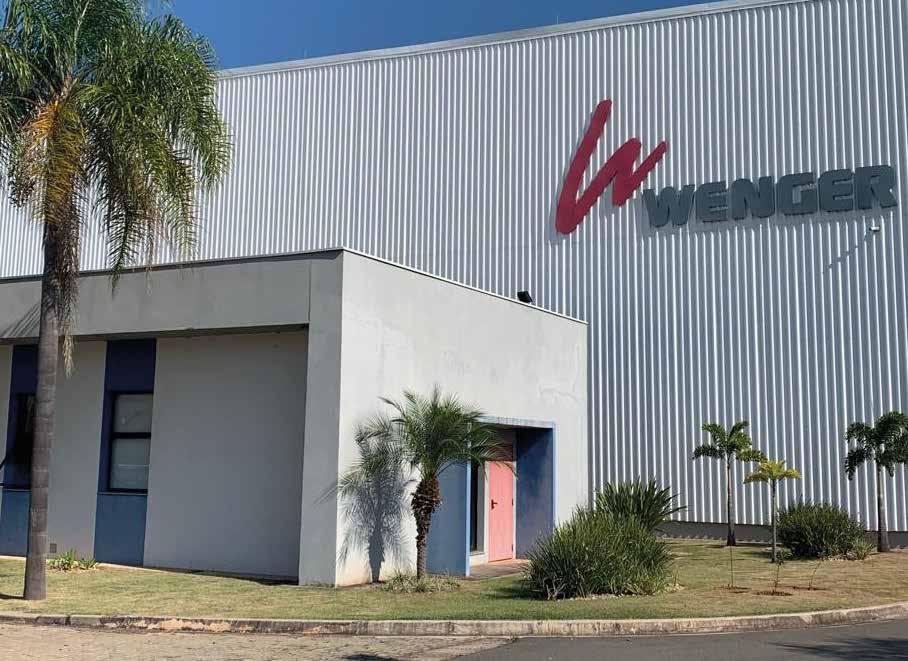
By Wenger
On May 10, 2022, the day before the opening of Fenagra 2022, the All Pet Food team had the opportu nity to be invited by Wenger Manufacturing LLC and Maverick Extruder Development Group to visit their produc tion plant facility , located in Valhinos, Sao Paulo, Brazil.
Very early in the morning, Claudio Mathias, Global Director of Sales and Strategy of Maverick – A division of Wenger, pic ked us up at the hotel located in the Center of Campinas, São Paulo and took us to visit the impressive plant that Wenger and Maverick developedin Brazil, which is worthy of admiration and an example for the whole region.
Although this plant takes place in Brazil, its production covers the entire Latin American region, and even on occasion, it takes care of several orders for equipment intended for the European and Asian markets, a topic that will develop later in this article.
Upon arrival at the plant, Claudio kindly introduced us to Glau ber Rodriguez, Director of the faclity and in charge of all manu facturing details of parts and equipments previously commissio ned by different companies that bet on such refined quality of equipments.
Once we stepped in the facility we could appreciate the diffe rent offices with the personnel in charge of the design of the spa re parts, Stock, purchase of raw materials, system department, among other sectors. We sat down and statart a very friendly conversation with Claudio and Glauber, who provide us such
42
important details of both companies, their history and work po licy, something inherited from the Wenger brothers more than 75 years after the Company foundation.
The quality, love, professionalism and passion in everything they do comes to light when both Glauber and Claudio tell us how the plant facility and how its produc tion have been growing every year. Although the plant was inaugurated in 2016, since 2019, just at the light of

the pandemic that hit the planet, the production of pet food grew and, therefore, the production of equipments and the export of complete lines, not only to the coun tries of the region, but also to Europe and Asia, due to the high demand the company has in its facility plant from Sabetha Kansas, USA.
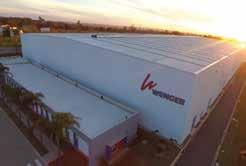
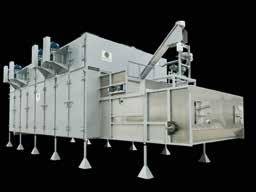
Something that caught our attention, in addition to the high level of professionalism, is the implementation of Sustainability within the company’s strategy, which is reflected in the purchase of regional components of very high quality that allows the de sign and production of equipment. with higher levels of energy savings.
Área de Producción
We couldn’t help but be amazed at the cleanliness and level of detail that permeated the 10,000 m2 production area, where we could appreciate the focus and passion with which the plant’s engineers and experts worked. The spare parts were arranged in such a way that it was impossible not to distinguish each one of them. It help us to check the quality of the steel and the final product.
Glauber and Claudio showed us the production of Wen ger Horizontal Extruders and Dryers, as well as Maverick Extruders, previously commissioned by various pet food companies. Maverick’s proposal is to offer the market a
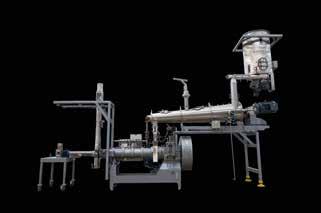

43
Single Screw Extruder
WENGER DO BRASIL ALAMEDA ITATUBA, 2232 JOAPIRANGA II 13278 - 520 VALINHOS - SP BRASIL TEL +55 3881 5060
line of standard or modified equipment, keeping the principles of integrity, reliability and quality of Wen ger equipment, but with greater flexibility.
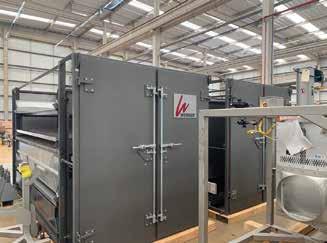


The plant not only manufactures equipment and complete lines of pet food, it also produces equipment for aquaculture and human food, although due to the great growth of the Pet industry in recent years, its production represents 70%.
According to Glauber, the 84% of pet food manufacturers worldwide own at least one Wenger piece of equipment.
To say Wenger or Maverick is to say quality, efficiency and sustainability and that´s why Marel company recently didn´t hesitate to acquire Wenger Manufacturing LLC., inclu ding all the main commercial activities of the group.

According to the company’s statement, it was acquired for USD 540 million, although it was agreed to continue the Wenger legacy and its significant impact on the community, as well as Marel shares for Wenger employees.
Marel sees great opportunities and is committed to in vesting in the combined business to accelerate growth. The acquisition is expected to improve margins and profits. Plan ned initiatives include expanding manufacturing capacity to meet high demand in Wenger’s core markets.
We say goodbye to Glauber, Claudio and the entire team with the satisfaction the Industry counts with a production facility in Latin America for the manufacturing of pet Food equipments of the highest quality, which also has complian ce with the highest processing and quality standards that any country of the so-called first world could sign. A pride for our industry that continues to grow steadily, with alliances with Universities and Research Institutes, to achieve the level of excellence in the production of balanced feed in general, and contribute to the nutrition of the different animal species.
Congratulations and Success in the future now hand in hand with Marel, which we´re pretty sure will be able to provi de a better service globally, expanding its projects and solu tions for the entire feed & food industry and contributing to a great development in terms of energy efficiency, processing and nutrition.
Congratulations and all the best for this example company for the world!
44
The Future Awaits
Built on partnership and innovation, Wenger is providing more opportunities for client success.
For almost a century, Wenger has delivered extrusionbased innovations to our partners. We’ve worked alongside you to develop new processing solutions and better products, providing our industry-leading expertise and ongoing support every step of the way.
We don’t plan on stopping any time soon.
Wenger’s global food processing family is growing, and we look forward to the exciting opportunities that lie ahead. We will continue to deliver even more innovations and technologies to benefit companies that share our vision of tomorrow.

Wenger.com

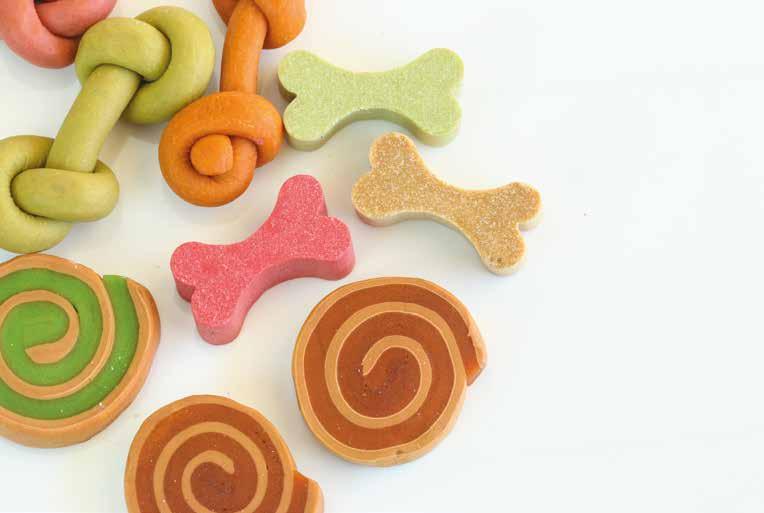
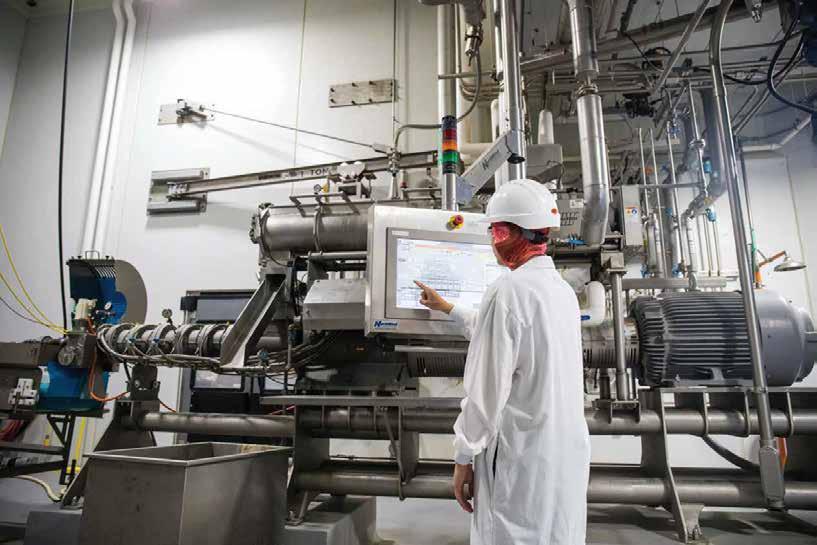
HUMANIZATION AND PREMIUMIZATION OF PETS ON AN INDUSTRIAL SCALE
By Oscar Diez
Using the term humanization in pet foods is still not very clear or well defined, especially for those who produce dry extruded foods on an industrial scale.
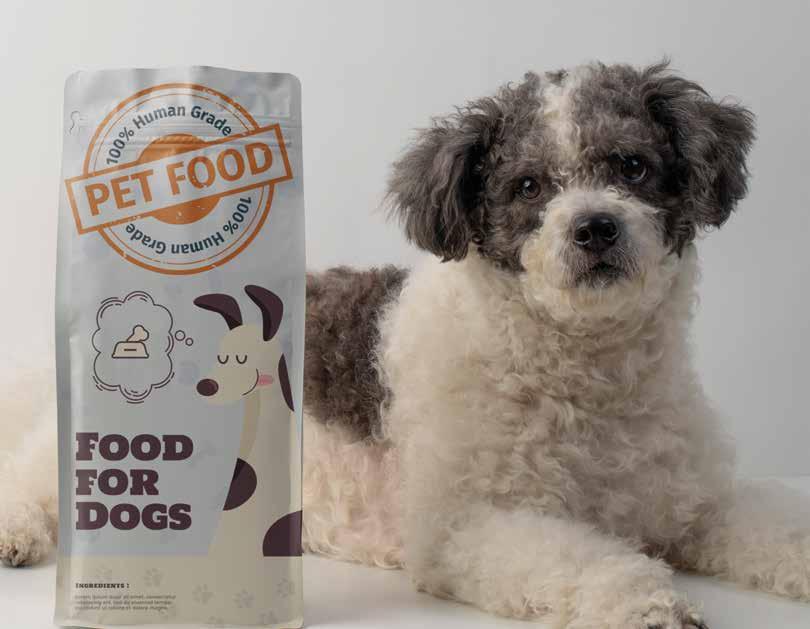
AAFCO (Association of American Feed Control Officials) makes it very clear the term Human-grade is not edible for hu mans and that it´s closely related to the conditions in which they are manufactured, the packaging used and that the raw mate rials are very close to federal regulations for the production of food for human consumption. The organization also emphasizes that not everything that a human consumes is safe for your pet.
First of all, it´s important to understand the real meaning of humanization in pets, and this is closely related to the natural ex pression and as a permanent trend that our pets today are consi dered members of our family. Also their owners already treat their pets as children and consequently, we humans are increasingly receptive to using products for our PETs similar to those we use for ourselves. This consumer profile, which is growing absurdly, is looking for premium, high-quality products, which are healthy, highly nutritious and improve the living conditions of their pets.
I personally compare human-grade PET foods to electric cars. Although the value of electric cars is high, there are consumers who pay for these kind of vehicles. Most manufacturers in this category of vehicles are expanding, to the point that almost all brands already produce electric cars and prices are becoming more competitive and accessible because there´s more supply and demand is growing steadily .
For human-grade PET food it´s the same, there are few com panies that produce it and its prices are not cheap at all, but it´s expected that industries in the sector take a close look to these opportunities, and many are already investing in conditioning their factories to produce pet foods as if it were human food. North America is responsible for almost 50% of world sales of 100% human grade pet food and this is largely due to the fact this market was driven by the expansion of consumer knowledge about the positive influence on the health of their pets.
48
When we talk about pet food, just two categories of food quickly come to my mind: Dry extruded food and Treats (wet, se mi-moist, dehydrated, freeze-dried, cookies, dental, etc). When we refer to dry extruded foods, we highlight extruders, dryers, counter-flow coolers, grinding mills and coating systems for li quids.
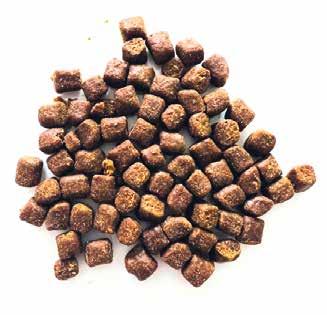
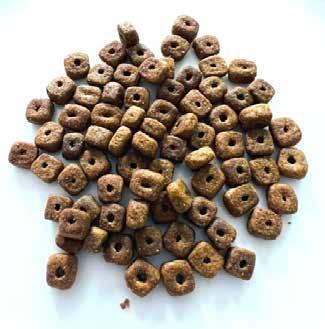
Now, when we talk about treats, the picture changes in a great extend. I recommend that, if you are going to produce treats, it´s better to start by choosing the types of products you are going to produce instead of choosing the machines first, otherwise, you´ll have to adapt to what the machines do, and not always it´s exact ly what you want to produce, or what the market request. The machines, processes, raw materials and even formats in treats, varied and new products appear every day. In dry pet food there is not much variation.
To produce human-grade pet food, one of the main charac teristics is to use fresh raw materials and this means their shelf life is shorter. Dry extruded foods usually last around 12 mon ths. Starting from this point, it´s already a challenge to offer the market a product (without preservatives) with a shorter shelf life. Another challenge to produce human-grade food is to develop an adequate facility to process certain raw materials, even more so if they are fresh and have a high percentage of moisture.
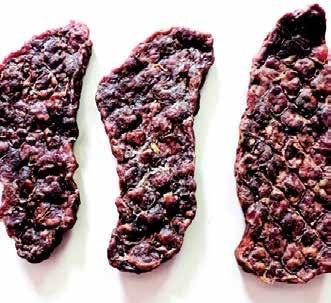
In the United States, there are few companies that have been approved by FDA (Food and Drug Administration) and that their facilities comply with the human grade process. This means for industrial pet food factories, using the term Human-Grade on their packaging is not for everyone.
If you still have no idea of what a pet food factory dealing with human-grade pet Food would look like, think of a sausage factory
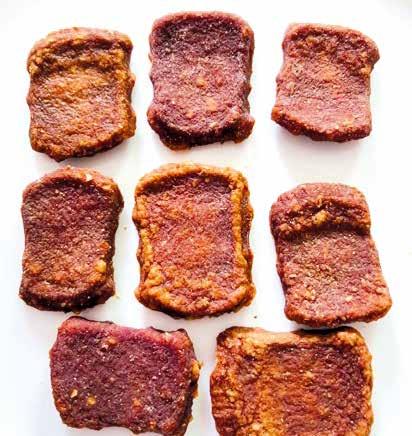
49
Cat food using fresh meat (45% protein) – produced in twin screw extruder.
Treats 100% Human-grade – Jerky 100% beef.
Soft Treats with 85% meat - Human-grade quality.
Mini Jerky based on salmon (50%) protein.
where there are stainless steel mixers, industrial cold chambers for meat blocks, stainless steel emulsifiers, shiny floors, all em ployees with gloves and face masks, stainless steel bench tables for handling products, low ceiling, stainless steel packaging and transport system, etc. Above this, you have to check if the in gredients used are human grade. Many companies buy raw ma terials with Human-grade and GAP (Global Animal Partnership) certifications.
The challenges don´t end there, achieving good palatability with fresh food is not easy. When we make dry extruded foods, we have endless enhancers that enhance flavors and aromas, but when we talk about human quality, this is already ruled out because it automatically loses its human quality essence. And, last but not least, the packaging and labeling system at a human quality level.
For this reason, FDA has gone so far as to list humane-grade pet food requirements within its Code of Federal Regulations (21 CFR – Title 117). Perhaps now, we can better understand why the United States accounts for nearly 50% of all human-grade PET food produced globally.
Apart from this, the government bodies are so demanding that, in a certain way, they have transformed these companies into factories that really offer a high quality food and there is no doubt pets receive a super nutritious food and that improves their health. I believe the most important thing is the local consu mer has realized the pet food industry has been revolutionized and today brings a high quality product. Recently, I´ve visited se veral supermarkets and pet shops in the United States, and in all the points of sale, I have found a wide variety of human-grade pet foods that vary between 08 to 40 dollars.
But the question that we ask ourselves now, despite the fact that the path outlined is not easy at all, why do we need to produ ce human-grade pet food? The answer is, demand is increasing, pet owners are looking for this and can pay for it.

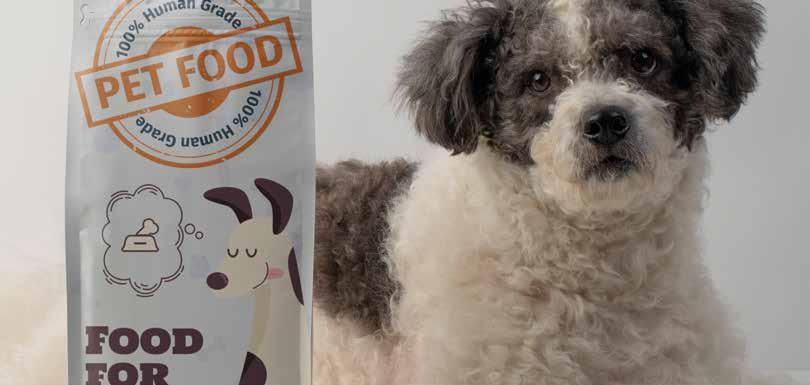
Applying this to our reality, we realize that in our countries we don´t have these governmental bodies that require us and determine how to make human grade pet food, and even more, place 100% human grade food in the packaging, or that the raw materials are in the condition of human consumption. If compa nies want to choose to produce this type of product, it´s essential to highlight the following principles: Transparency, honesty and commitment to animal health.
If the industry takes a decision to produce much more pre mium foods, you can start with producing extruded fresh meat based foods using twin screw extruders. In this sense you´ll be familiar at working with blocks of frozen meat, which is later grinded, emulsified and injected into the preconditioner of the extruder. The percentages of meat can vary from 25 to 70%, and depending on the extruder you can that increase that percenta ge. Functional or natural ingredients such as fruits, vegetables, whole grains, glucosamine, prebiotics and probiotics are already part of human-grade foods.
Many dehydrate fruits and vegetables are grinded and use it as part of ingredients in formulations. Despite the fact very sma ll amounts of these raw materials are still used, the marketing department places great emphasis on this and places a certain emphasis on such functional ingredients in its packaging. Again, here you already start to get familiar with using other types of in gredients. These ingredients can also be used in treats or snacks for dogs and cats. Dehydrated and freeze-dried foods are gai ning more and more prominence in these categories and it can be said they are human grade food. We can´t leave behind Puree Cat Food, a kind of food cats love.
I consider it´s very hard to adapt a dry pet food extrusion fac tory and transform it into a human grade pet food plant . The ideal would be to start a project fromthe very begining, thinking about new conditioned environ ments and take into considera tion all the points that I ´ve stated in this feature.
mantener la innova ción es una estrategia muy utilizada por em presas que ya tienen éxito. Este éxito no es tan fácil de mantenerlo y solo lo consiguen los que aplican la Innova ción Disruptiva.
Personally, I would call this “Sustainable Innovation Disrup tion” because we are going to produce a better performing pro duct to sell it with more benefits to our best customers. Take into account maintaining innovation is a strategy widely used by companies already successful. This success is not so easy to keep and only those who apply Disrup tive Innovation can achieve it. Keping a disruptive mentality in the pet food market means aiming to create good products who attracts customers in low-cost market segments and new mar kets (Low-end and New market), which can´t affect customers who pay for premium food or who expect better quality.
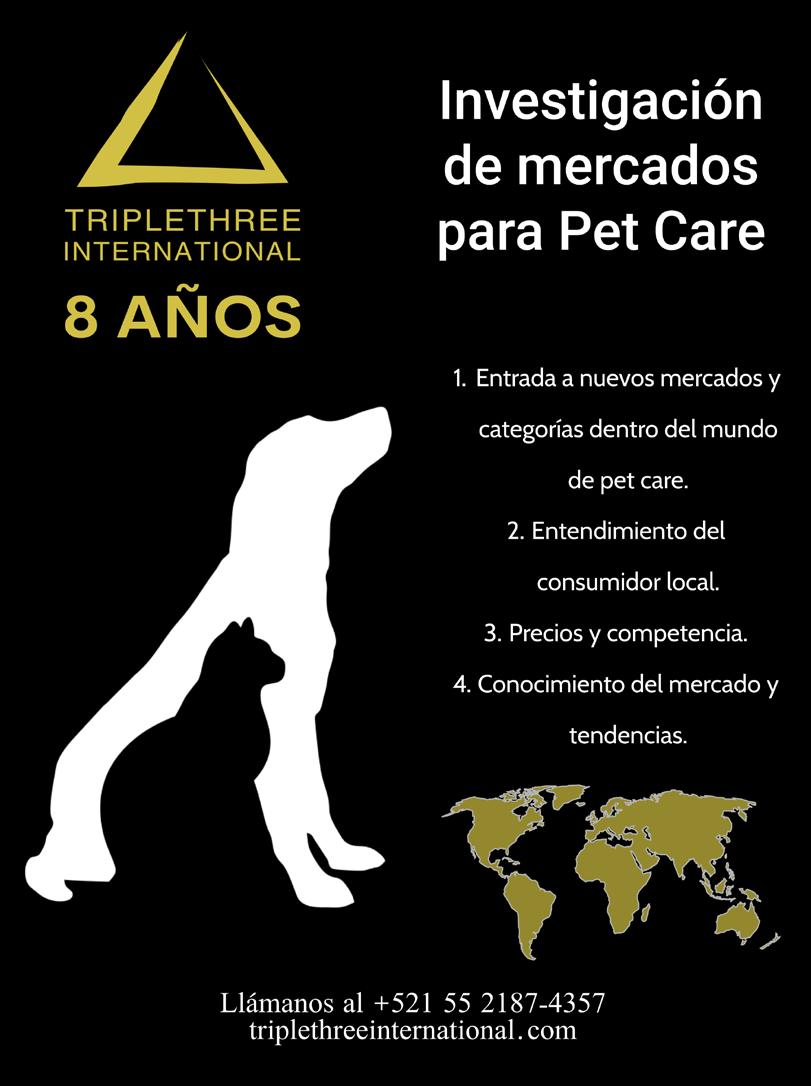
Yeruvá
+54 (0)3496 425474 /475 /476 federicoguida@yeruva.com.ar www.yeruva.com.ar
Symrise Pet Food

+55 19 99266-3331 marcio.ponce@symrise.com www.symrise.com
AFB INTERNATIONAL +54 11 4 894
argentina@a international.com https://a international.com
Callizo Aromas +57 (305)
info@callizoaromas.com www.callizoaromas.com
NorthWind Technical Services




Clablevey Conveyor
+1 (641) 673 7419 info@cablevey.com www.cablevey.com
Clextral
+33 (0)4 77 40 38 88 info@cablevey.com www.clextral.com
CPM +54 (9) 11 5389 5312 sales@cpmroskamp.com www.cpm.net
Extru-Tech +1 (785) 284 2153 extru-techinc@extru-techinc.com www.extru-techinc.com
Famsun Group
+86 (514) 878 48880 mypublic@famsungroup.com www.famsungroup.com
Ferraz +55 (16) 3934 1055 vendas@ferrazmaquinas.com.br www.ferrazmaquinas.com.br
PLP Systems

+39 (0523) 891629 info@plp-systems.com www.plp-systems.com
Biorigin
www.biorigin.net
Brascorp
https://www.brascorp.com.ar/
Iberian Feed
Buhler Group
info@buhlergroup.com https://www.buhlergroup.com/


Gea Group +569 3402 3810 info@gea.com www.gea.com
Maverick
+55 16 99615 22 33 cmathias@maverickedg.com http://www.maverickedg.com/

Wenger Manufacturing, Inc
+1 (785) 284 2133 info@wenger.com https://wenger.com/
Schenck Process
+1 (816) 891 9300 americas@schenckprocess.com https://www.schenckprocess.com/
Industrias Bartoli Hnos +54 (0343) 486 2707 info@bartolihnos.com.ar www.bartolihnos.com.ar
Andritz Group
+43 (316) 6902 0 welcome@andritz.com www.andritz.com
JBTC

+1 (312) 861 5900 Mail https://www.jbtc.com/
Soulpack
+55 (48) 3052 8700 comercial7@soulpack.com.br https://soulpack.com.br/
Statec Binder
+43 (3112) 38580 0 o ce@statec-binder.com www.statec-binder.com
Clivio Solutions
+ 54 9 2352 540040 francisco.pantoni@cliviosolutions.com www.cliviosolutions.com
Triple Three International
+521 (552) 187 4357 ifranco@triplethreeinternational.com www.triplethreeinternational.com
8570
BARTOL HNOS S R L NDUS R AS
+55 (14) 3269 9200 biorigin@biorigin.net
+54 (3327) 411440 brascorp@brascorp.com.ar
+ 52 722 262 05 12
814 9448
LLC +1 7 852 840 080 kastorga@northwindts.com www.northwindts.com
+59 (399) 783 0561 efabian@iberianfeed.com https://www.iberianfeed.com/
Nutrition/Palatabilizers Nutrition Nutrition / Immunity Nutrition / Additives Nutrition/ Gut health Processing/Machinery Processing/Machinery Processing/Machinery Machinery/ Automation Consultancy Market Consulting Packaging Packaging Equipment Systems MARKETPLACE INDUSTRY SUPPLIERS

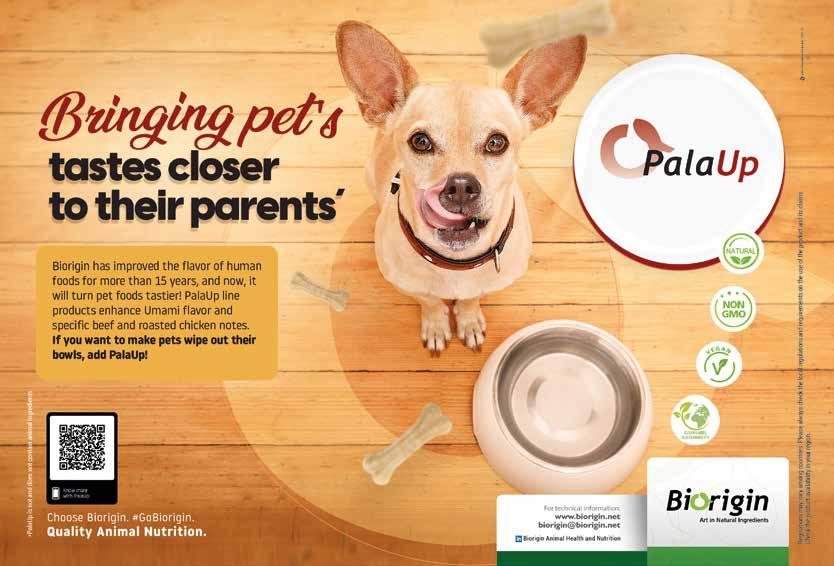
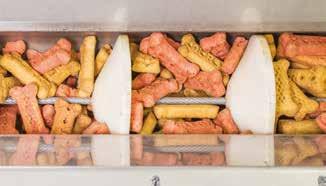


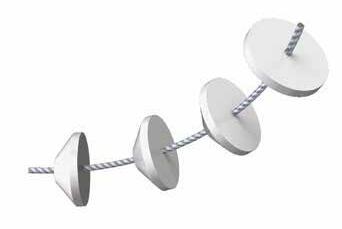
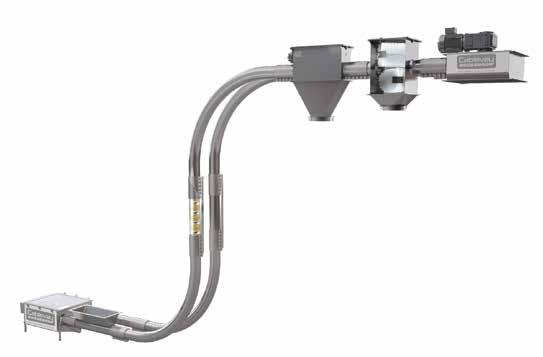

The Heart of the System CABLE & DISCS Dry Cleaning Brush Box Cablevey® Conveyors is a registered trademark of Intraco, Inc. 10/2022 • Leader in Tubular Drag Conveying • Gentle on your materials! • Starts & Stops Under Load • Dust-Free Enclosed System • Clean-in-Place Options • Low Maintenance • Energy-efficient System Capacity: • 8” (203.2mm) tube diameter • Moves up to 2,000 Ft³ (56.6 M³)/hr • Moves up to 80,000 lbs/hr (36,287 Kgs/hour) (depending on bulk density of materials) 8” Systems www.cablevey.com +1(641) 673-8451 info@cablevey.com Experts in Cable & Disc Conveying Solutions Gentle Clean Reliable Conveying
























































54
More than an event, a meeting point


55 September 27, 28 Zaragoza | Spain Zaragoza Congress Palace www.cipeu.es EUROPE PET FOOD INDUSTRY CONGRESS
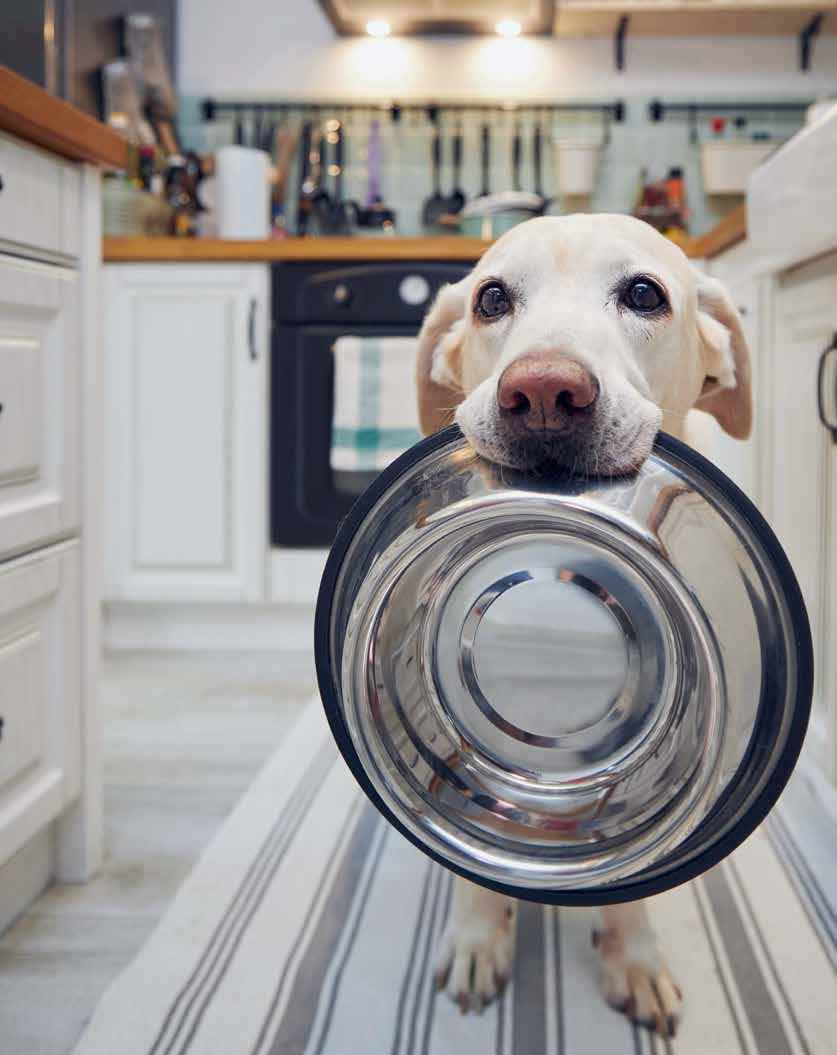
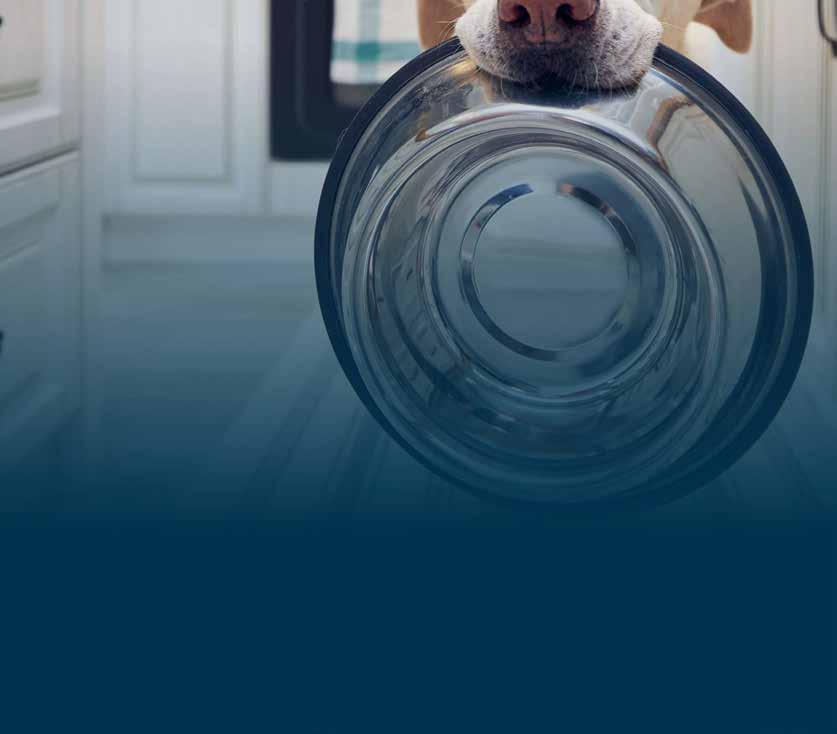































 By All Pet Food
By All Pet Food





 By All Pet Food
By All Pet Food















 Kibbles Pillows Dental sticks
Kibbles Pillows Dental sticks



 Table 1. Incidence of Palbio® 62 SP in dry food intake
Table2. Incidence of Palbio® 62 SP in wet food intake
Table 1. Incidence of Palbio® 62 SP in dry food intake
Table2. Incidence of Palbio® 62 SP in wet food intake

















 By Soulpack
By Soulpack







 By MVZ. Armando Enríquez de la Fuente Blanquet
By MVZ. Armando Enríquez de la Fuente Blanquet





 By Cama Group
By Cama Group






































































































